Ep. 64: Blue Giant Volume 5-6, by Shinichi Ishizuka
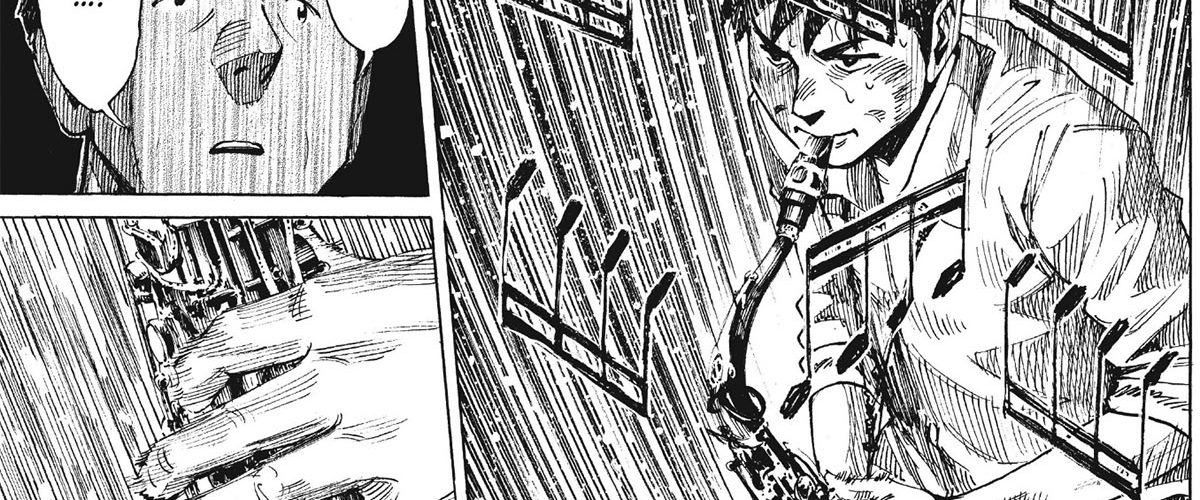
This week the team dives into their very first music manga, the jazz odyssey that is Blue Giant, by Shinichi Ishizuka! They’re also reading their first-ever series where they don’t start from the first volume, instead they’re diving straight into volume five! Does it work? Does any of it work? Listen to find out on this episode of many firsts on Mangasplaining!
Powered by RedCircle
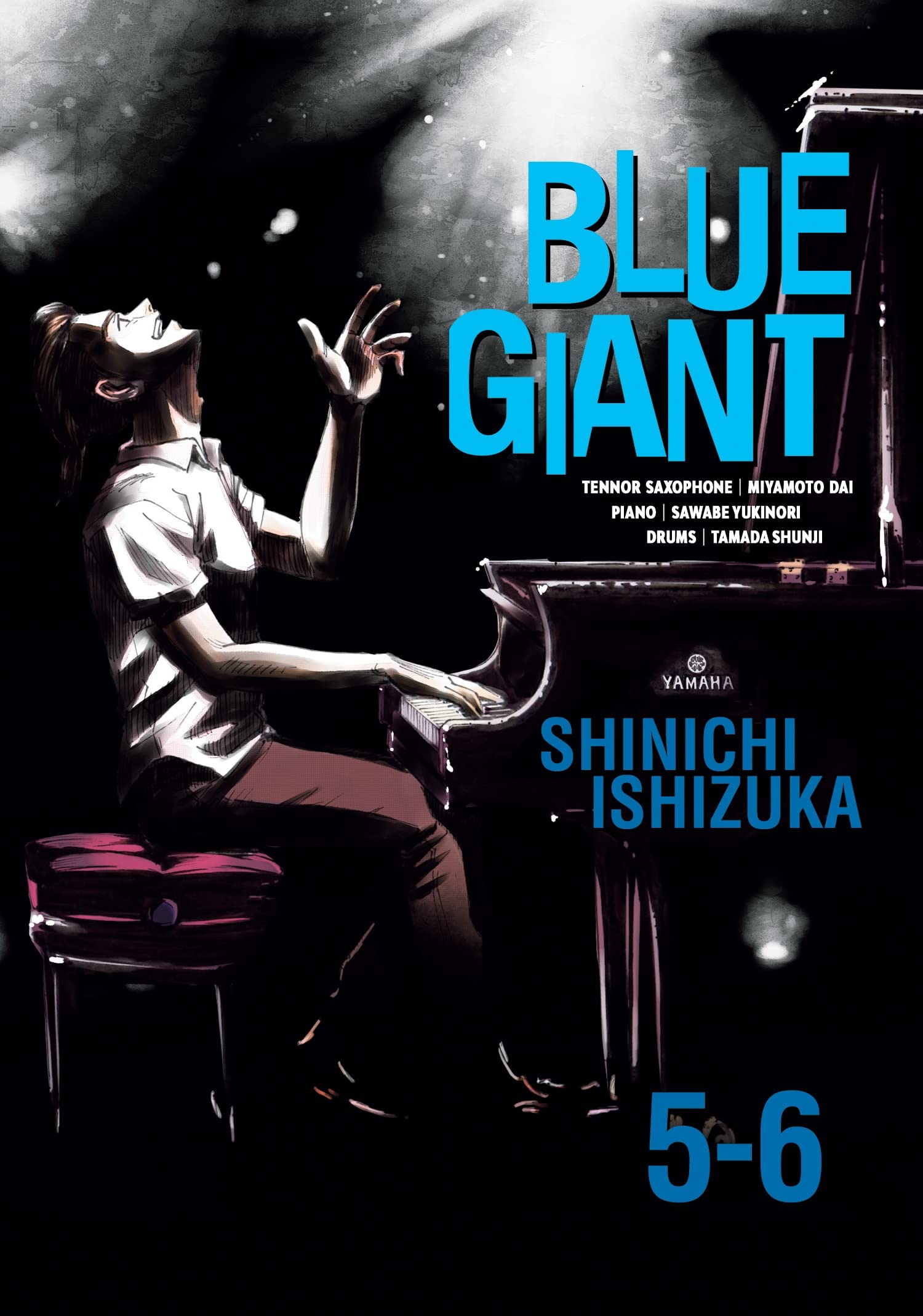
Blue Giant Volumes 5-6
By Shinchi Ishizuka
Translated by Daniel Komen
Lettering and retouch by Ludwig Sacramento
Edited by J.P. Sullivan
Published by Seven Seas (Print/Digital)
Audio editing by David Brothers. Show notes by Christopher Woodrow-Butcher and Deb Aoki
Before We Get Started: A few items!
First up: This episode (and our upcoming Dai Dark episode) were recorded before The United Workers of Seven Seas workers formed their union to demand better working conditions. We’re fully in support of the Union and wish them the best of luck as they fight for better working conditions for their staff and freelancers. To find out more for yourself, visit https://www.uw7s.com/.
Next: As Deb says (and as we’ve said a bunch!) we’re starting at volume 5 for Blue Giant, not volume 1. All will be revealed in a moment.
Finally: If you’ve got two different devices handy, you can listen to a playlist of jazz music that Deb curated for his episode, based on songs that are mentioned in volumes 1 through 10 of Blue Giant.
[Deb:] Need a bit more jazz in your life? Here’s an official Blue Giant Explorer playlist, from Universal Music Japan:
About Shinichi Ishizuka
Born in 1971, Ishizuka is from Ibaraki Prefecture. He studied in a university in the United States and became obsessed with mountain climbing after he was invited on a hike by a roommate. After he came back to Japan, and worked at a company, then at age 29, he decided to become a self-taught mangaka.
In 2001, with This First Step, he won the 49th Shogakukan Shinjin (Newcomer) Comic Award for General Manga. In 2002, This First Step debuted in the extra edition of Shogakukan’s Big Comic Original seinen manga magazine.
In 2003, Ishizuka started drawing his first series, Gaku – Minna no Yama, which was about mountain climbing. In March 2008, Gaku won the 1st Manga Award, and the 54th Shogakukan Manga Award in the General Category in January 2009. Gaku was also adapted as a live action feature film in 2011.
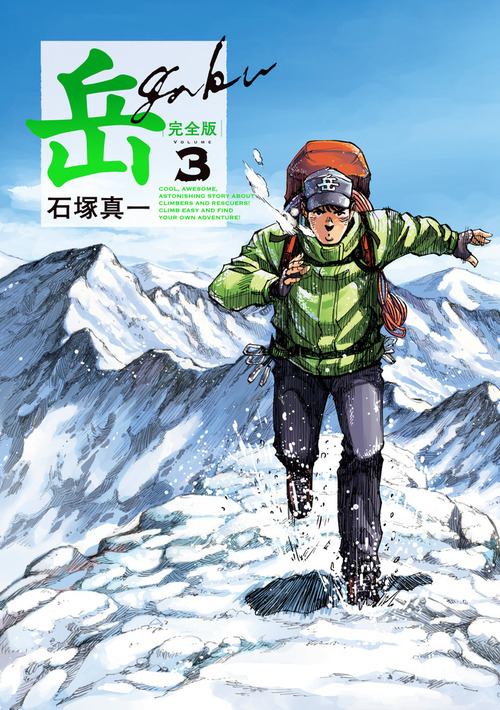
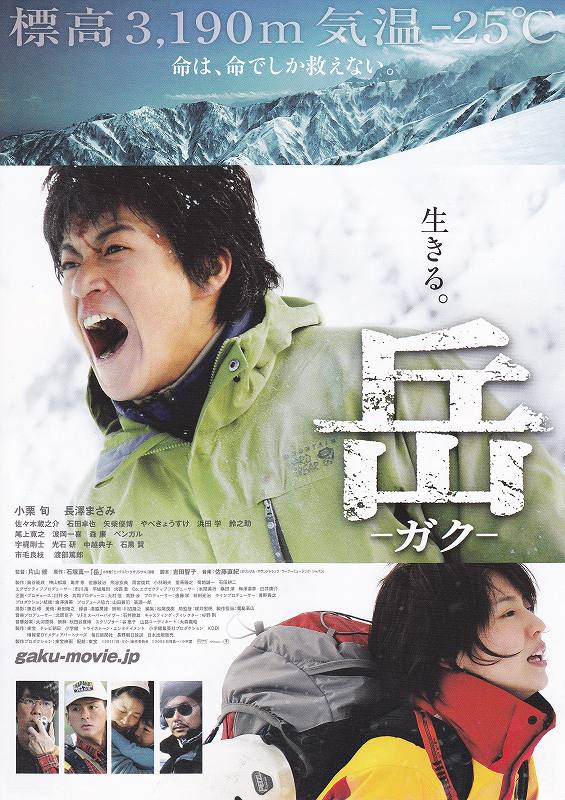
Blue Giant started in 2013, and the current arc, Blue Giant Explorer is serialized in Big Comic Magazine.

For more on Ishizuka, we recommend this great interview with him that appeared (in English!) in Tokion magazine:
https://tokion.jp/en/2021/02/26/shinichi-ishizuka-creative-expression/
You can find more about Blue Giant at the official website, https://bluegiant.jp, and the official Blue Giant Twitter account: https://twitter.com/bluegiant_bc. And get ready for the Blue Giant anime coming sometime in 2022 – https://bluegiant-movie.jp/
One of the things that you may be starting to understand is that this manga is a big, big deal in Japan. Here’s a promo video for Blue Giant vols 1-10 from publisher Shogakukan.
[Deb:] Fun Fact: Blue Giant is created by Ishizuka in collaboration with his editor, who is credited as “story director” under the pen name “Number 8.” This is a fascinating tidbit that harkens back to one of Ishizuka’s manga heroes, Naoki Urasawa. Urasawa frequently collaborates (and credits) his editor Takashi Nagasaki on some of his manga series, including Pluto and 20th Century Boys.
Nagasaki also writes manga with other artists – a recent example is King of Eden, which is out now from Yen Press.
1:08: David covering for Chip is very nice of him, and also just the saddest thing in the world. Heh. Go listen to our episode on Tezuka’s Phoenix volumes 1 & 2 to get the whole scoop.
1:45 It’s true! We released it last week (so you might’ve missed it), but Deb wrote up a clear synopsis of the first four volumes of Blue Giant, to get us set up to start at volume 5. As she mentions in that article, Deb chose to start at volume 5 to give us all the best chance at enjoying a series that she herself loved.
We’ve had issues with some pretty beloved books that we’ve read on the podcast, where starting at volume 1 just didn’t yield the results that starting at a later volume might have. Even expert mangaka sometimes need more than a volume or two to really get going, and with Blue Giant volume one starting in the lead character Dai’s last year of high school, and volume five starting with him graduating high school, moving to Tokyo, and starting his adult life… Well, it’s pretty clear that Deb made the right choice. Though reading this article now, I am pretty intrigued to go back and read those stories at some point in the future.
So alllll of that said, I can honestly say that, even if you haven’t read vols 1-4, you get caught up in just under a chapter of volume 5. Jump right in! Or read Deb’s article! Or… just keep listening to this episode of Mangasplaining! 🙂
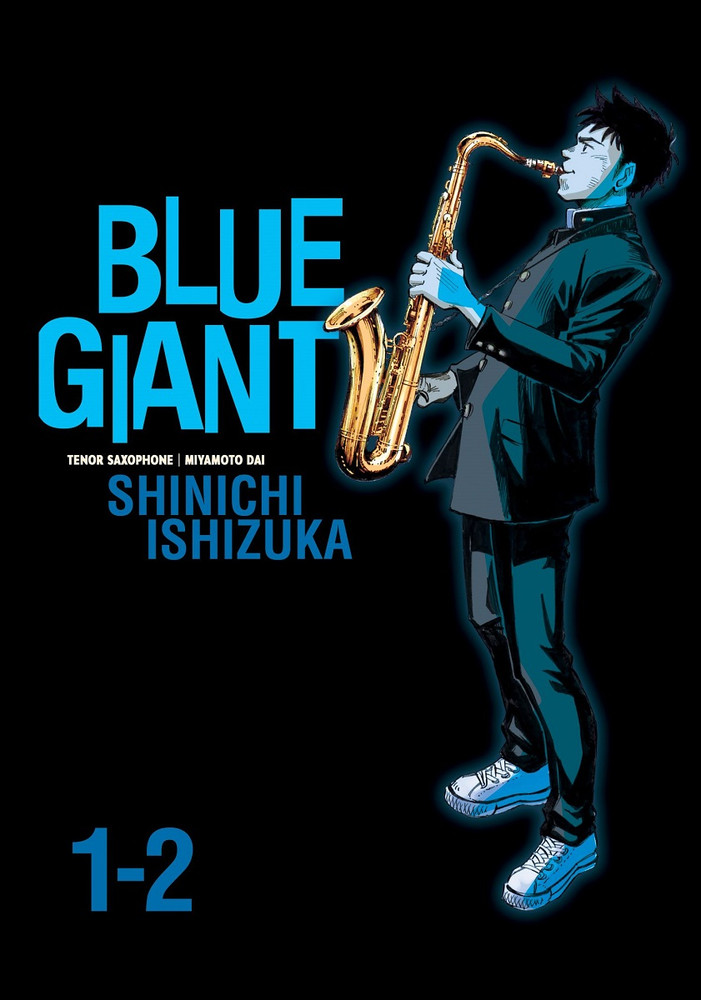
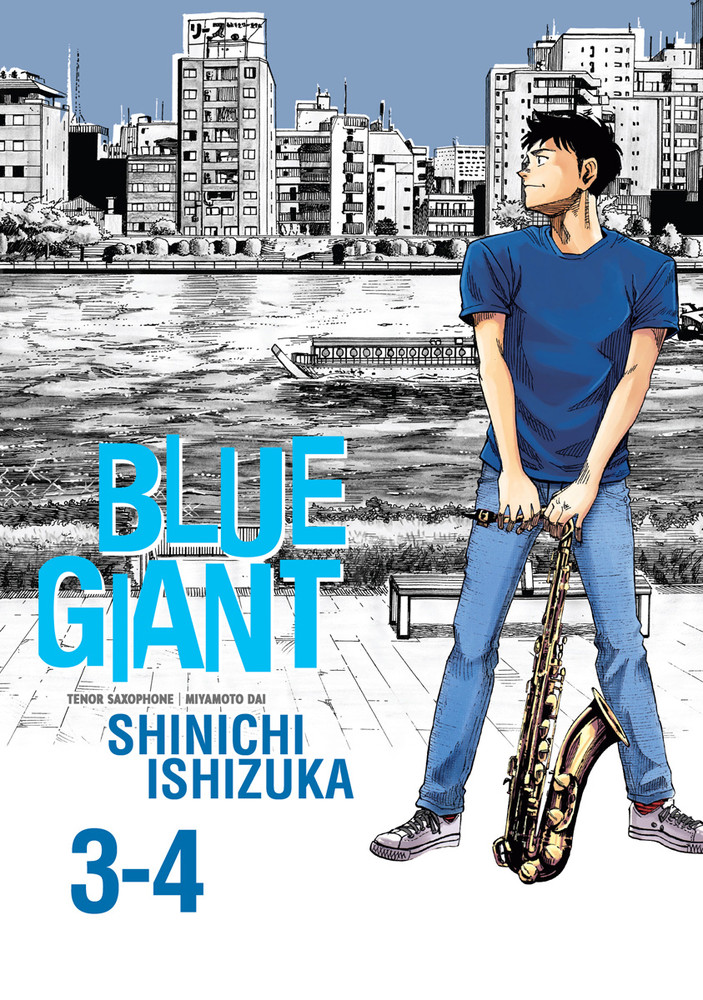
2:10 Here’s the description of Blue Giant from Seven Seas:
Series Description: Dai lived a normal high school life in Sendai: a city of hot summer days and rainy nights. Between basketball, part time jobs, and an uncertain future, something was missing. And that thing was music. With his days in senior year running out, Dai swears a heartfelt vow: “I’m gonna be the best jazz player in the world.” But what do you need to be the best? Talent? Effort? A lucky break? Or maybe just a deep, pure love for music, and too much stubbornness to know when to quit.
Volume 5-6 Description: At long last, Dai finally forms his own band. After months of practicing alone in Tokyo, Dai meets a brilliant pianist named Yukinori. In some ways, the two of them couldn’t be more different: Dai’s all about passion and inspiration, while Yukinori values perfect technique. It’ll take some adjusting for Dai to appreciate Yukinori’s feelings about music…and to find a third man for their group.
Winner of The Shogakukan Manga Award and the Japan Media Arts Festival Grand Prize
-Seven Seas website
8:40 As Chip says, the difficulty of showing music on the printed page is something that comics creatives have been struggling with for a long time. Not just wanting to have a music staff and notes on the page (which we mention at the verrry end of the podcast), finding ways to show what makes these characters special at playing music is really interesting. Because like Chip says, you can show loud, and you can show playing with a left hand, but the rest is done really well too.
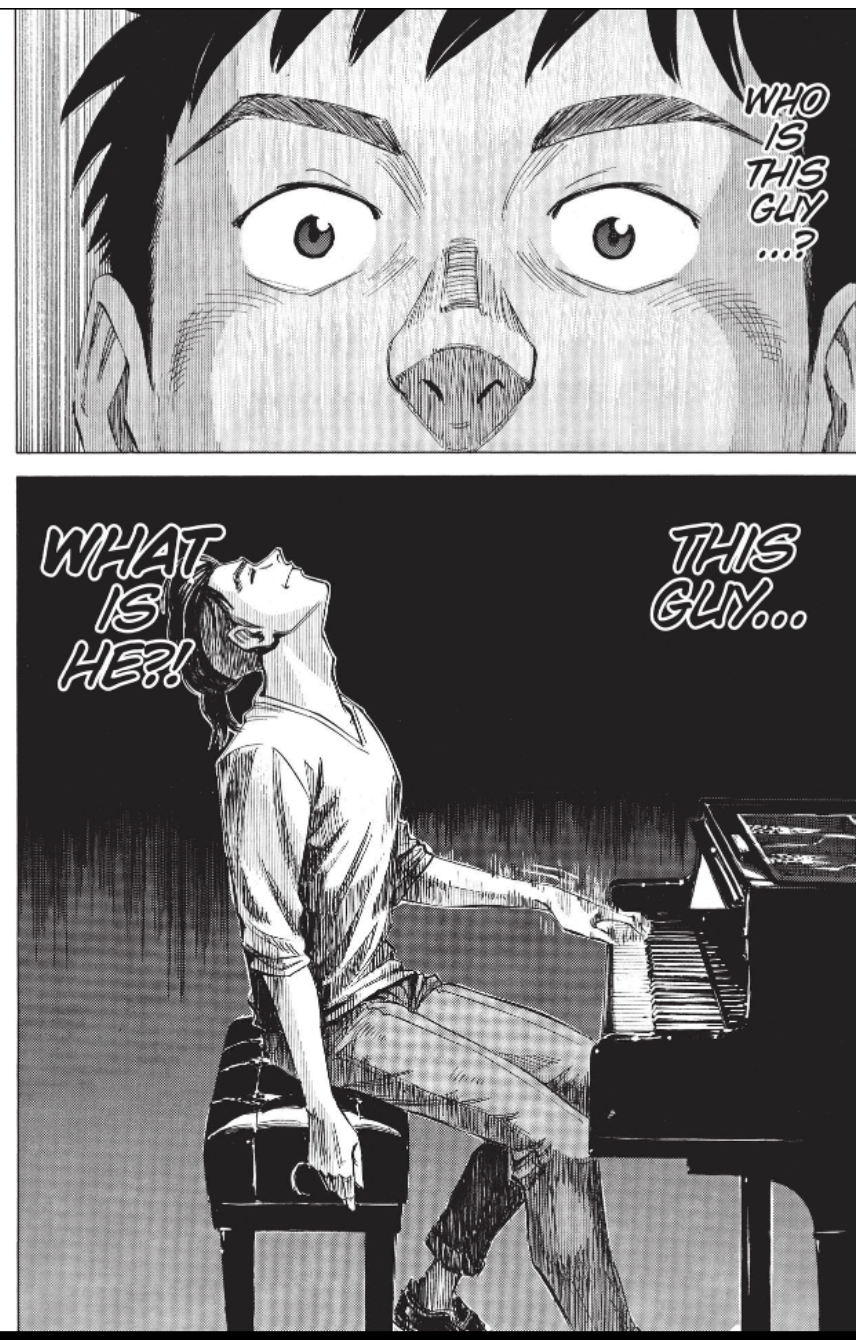
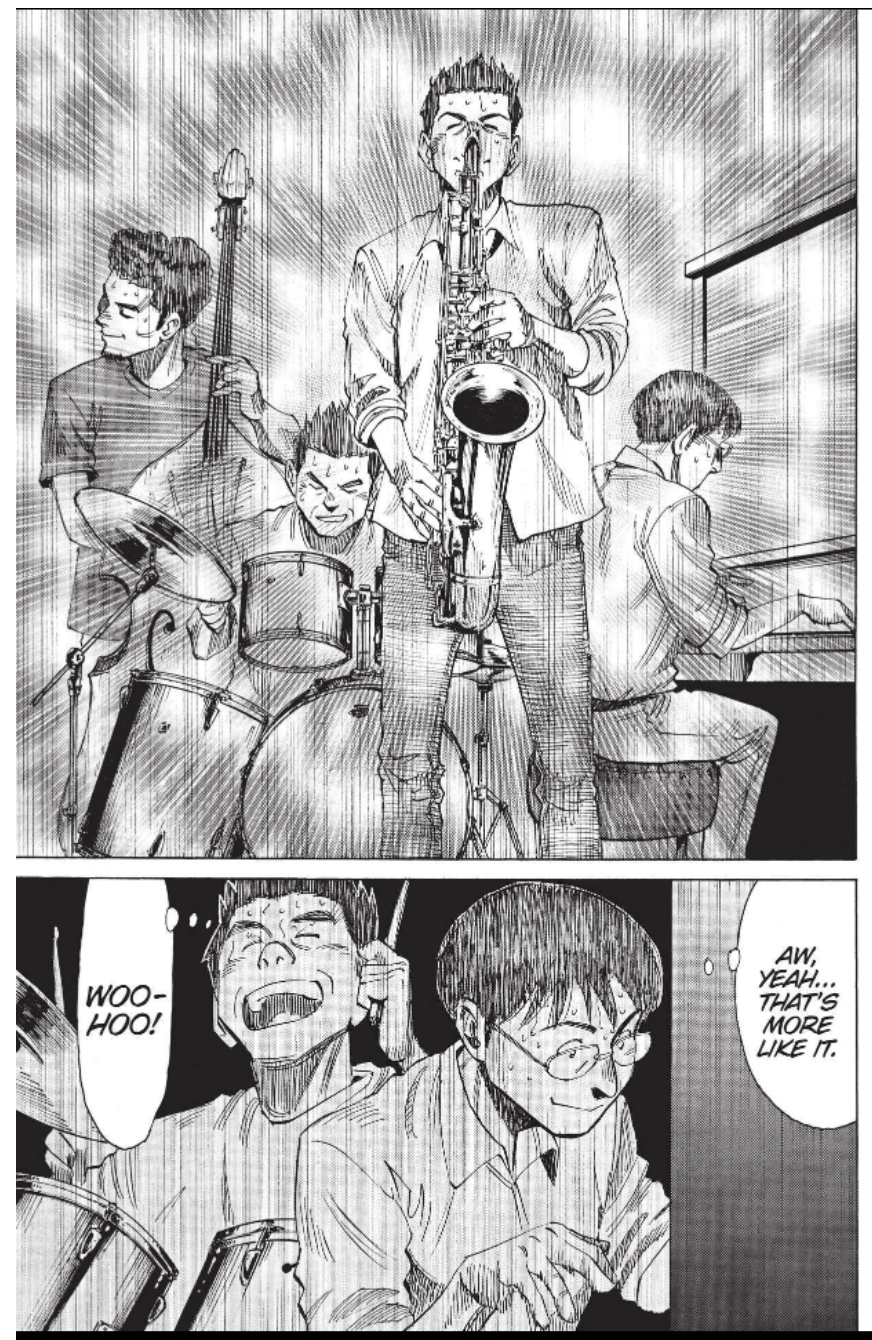
9:26: Yeah, foreshortening something like this is tough at the best of times, but someone should’ve given Ishizuka some photo reference for this one. Here is, The Finger In Question, and a situationally ironic couple of word balloons to go with it.
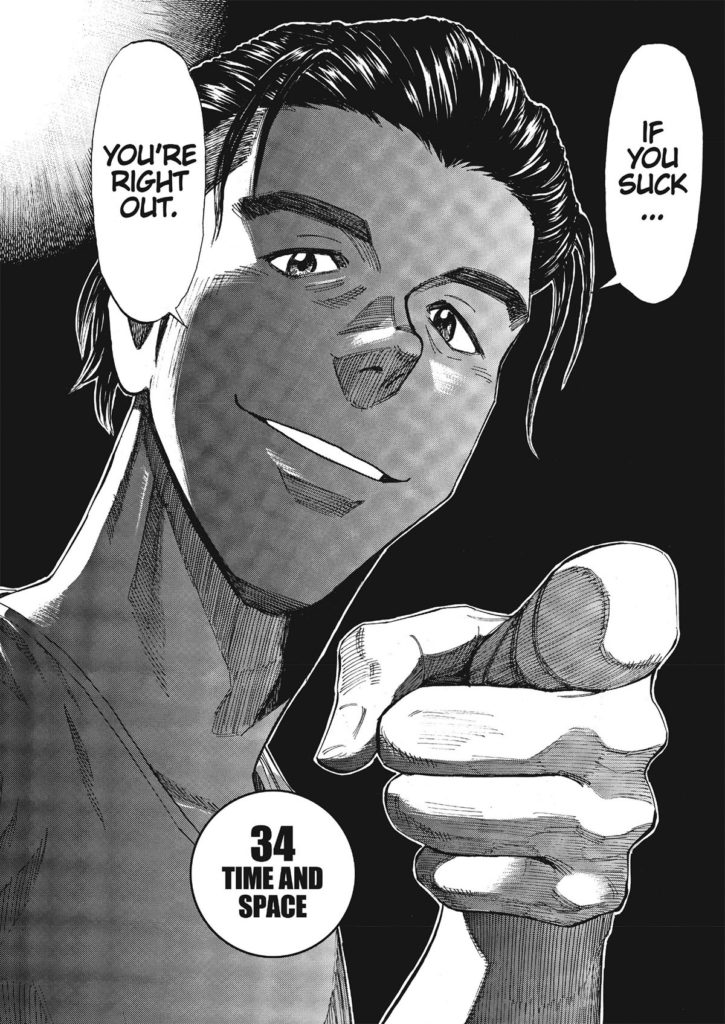
9:44: There’s amazing art too, where the professional trumpet player Percy Brown is playing the trumpet trombone trumpet at So Blue nightclub.
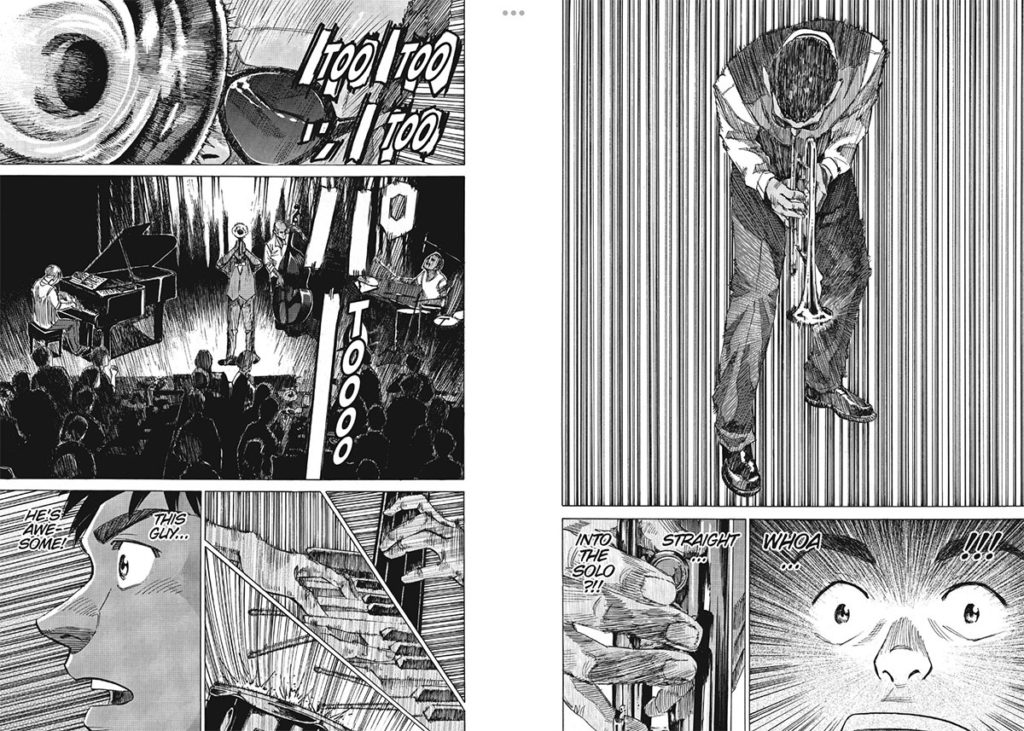
10:10: And then back to an image that doesn’t quite work, where Dai is playing with Tamada by the riverside at night.
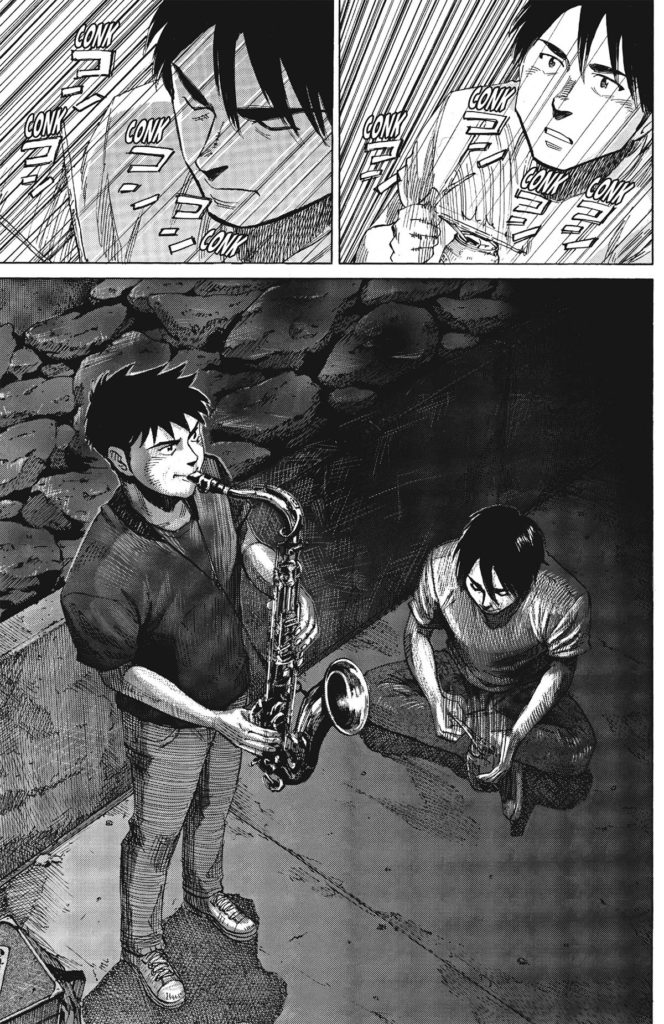
It’s interesting, because even between volumes 5 and 6, the art does get noticeably better, but there are still real art errors too. I think we’ve made our point though, no reason to belabour it. 🙂
10:44: Huh! He liked it! “I want to continue this!” is high praise from the Chipper!
11:20: I really did like starting this volume in a shitty little bar/club/live-house (music venue), I’ve been to bunches of them in Japan, and it really resonated with me in terms of setting a scene perfectly. Although there is a Japanese aspect to this, I think anyone who’s spent time in little jazz clubs or dive bars will probably immediately get where this is too. Though, frankly, I kind of can’t believe they have a washroom big enough to contain two urinals AND a stall, but that’s nitpicking. 😉
Which is to say, this bathroom joke is hilarious.
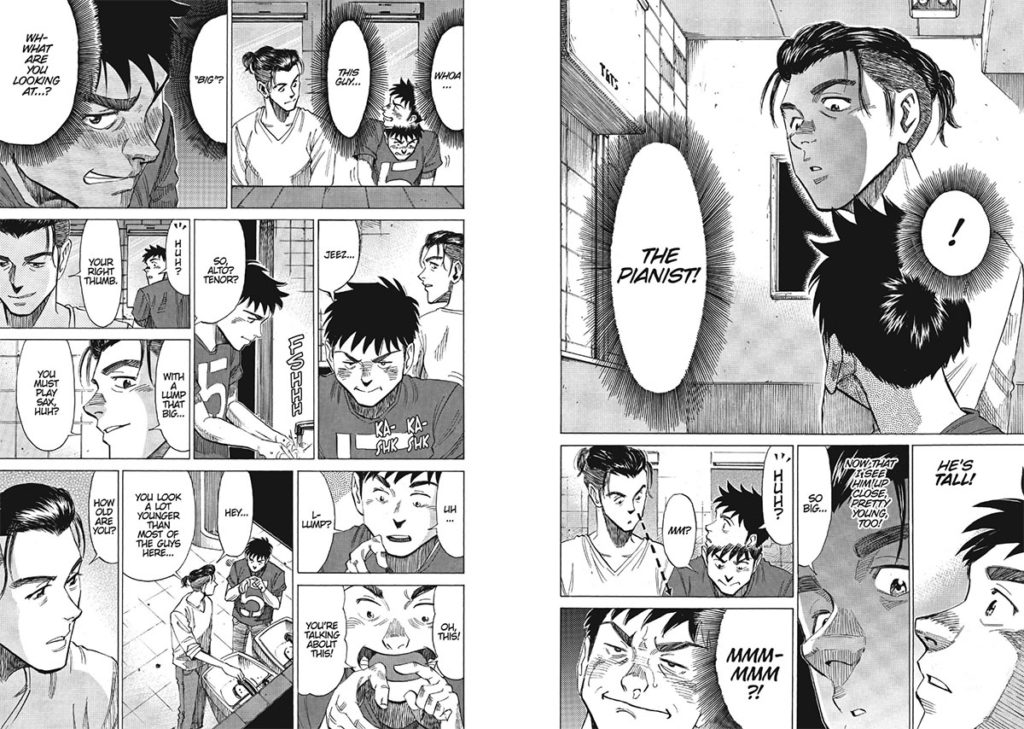
13:50 The characters being drawn like Naoki Urasawa characters… is true! I didn’t know the stuff that we put up at the top when we went into this episode. One of the many reasons that the show notes and the research we do are valuable for us, I think! We get stuff wrong during the podcast sometimes, we try to fix it in the notes, and thanks to all of you reading we’ve even updated the notes at times with new/better/more info, too!
15:40 This was an incredible explanation of a ‘frame’ in playing live jazz and jamming together. Jazz isn’t everyday life for most people, so this manga does teeter on the edge sometimes of being more of an ‘explainer’ manga, but I think the fact that it worked for all four of us as a story, with just enough jazz info being given out to drive the story, rather than stop it dead in its tracks, means that it probably stays out of that category…
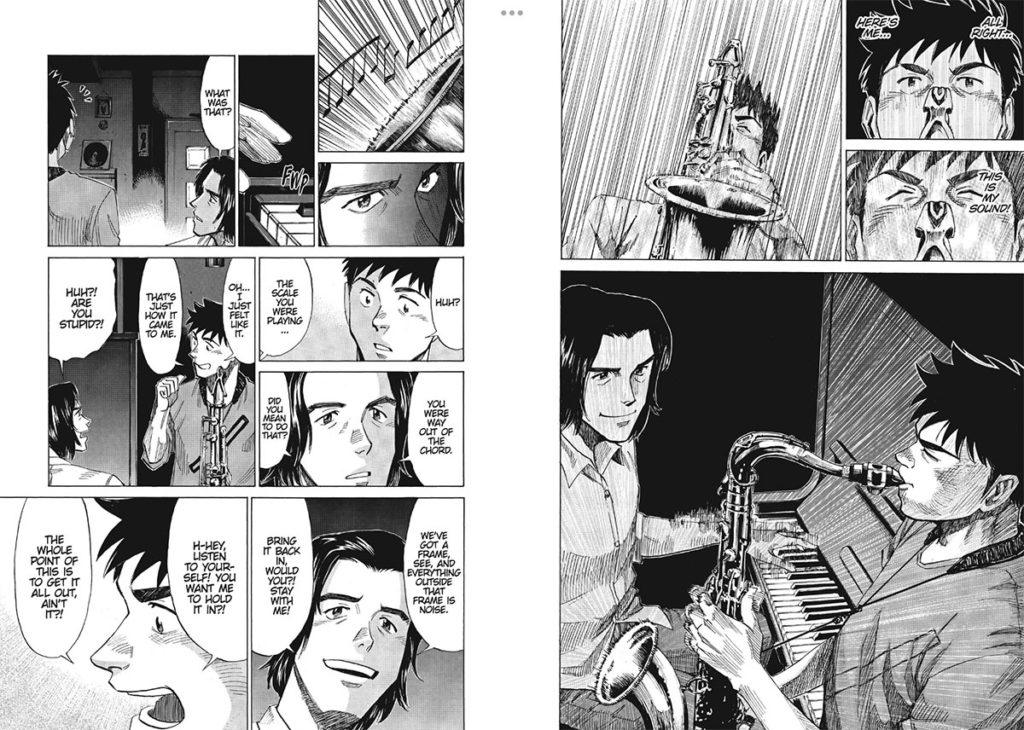
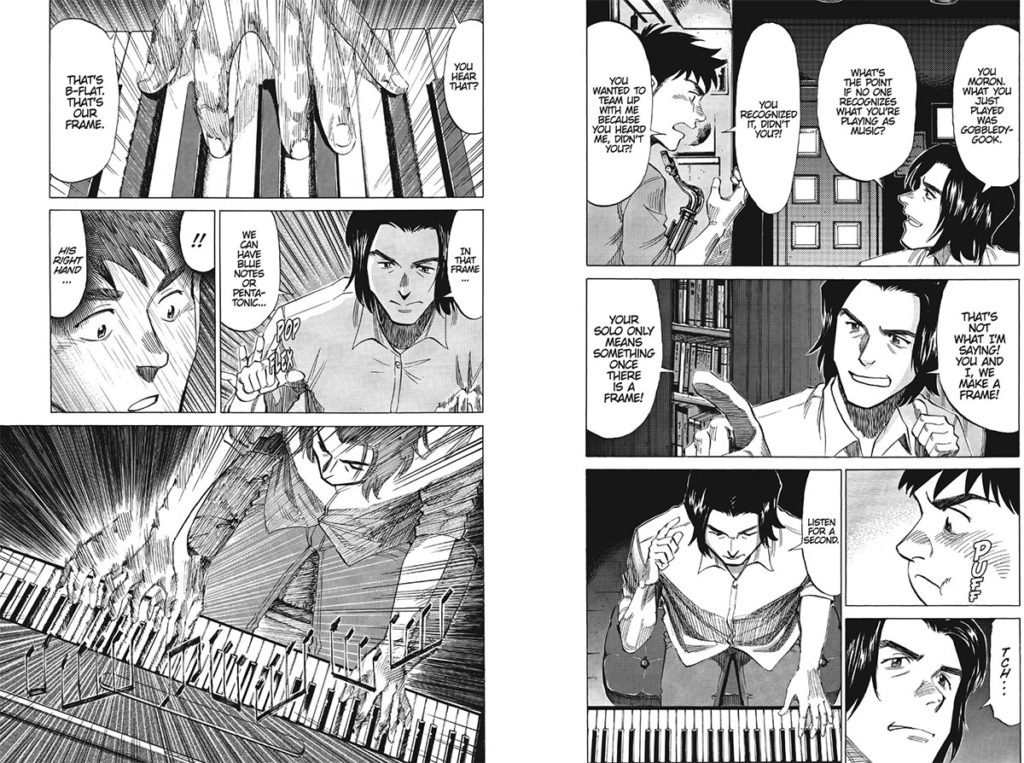
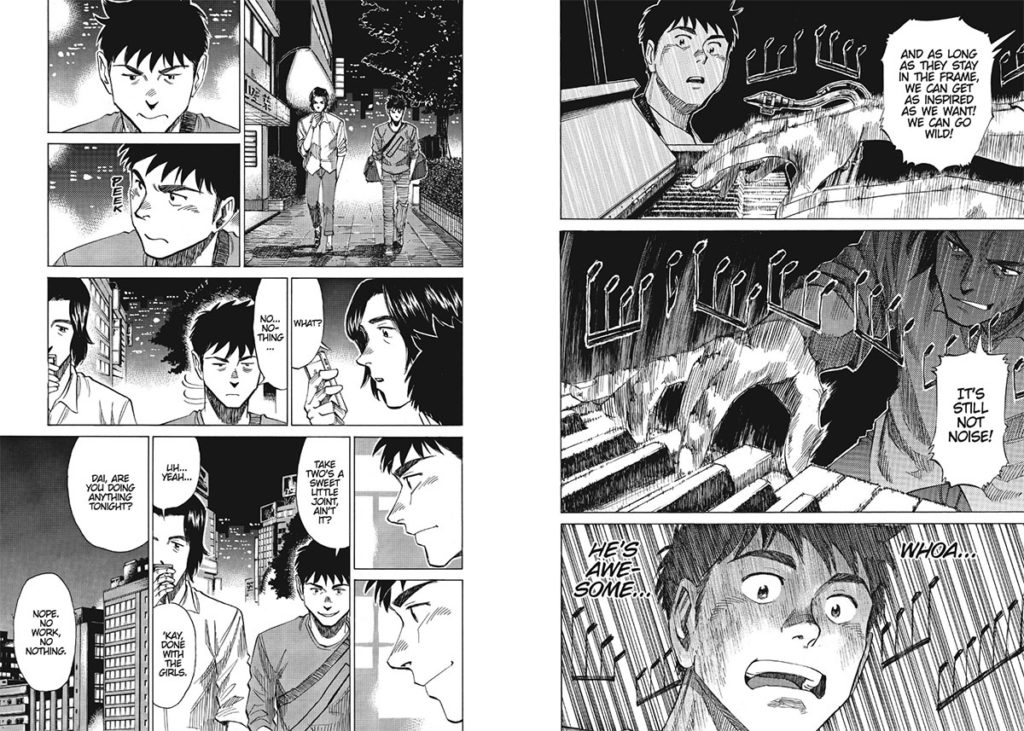
16:10 Deb is right to bring up Chapter 42 as being particularly great. It’s a silent chapter that shows how different people interact with the act of playing music, spent entirely inside a musical instrument store.
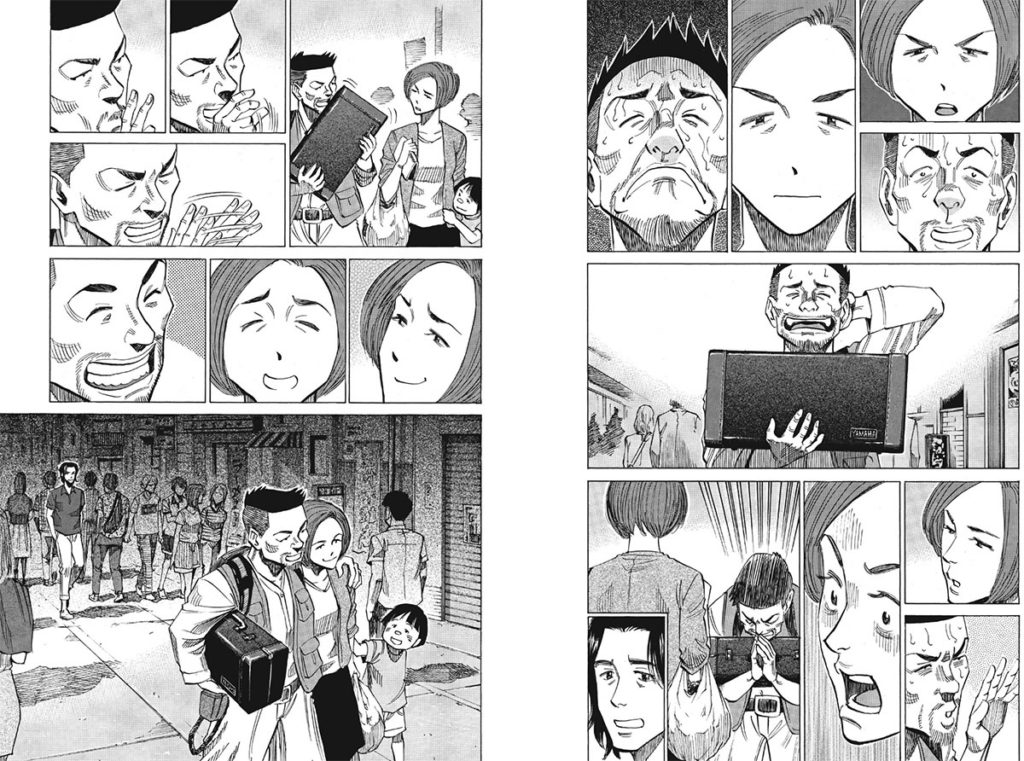
Likewise, at the end of this volume there’s a silent “bonus track” chapter (originally included in a jazz compilation CD put out by Universal Music Japan) featuring Dai practicing along the riverside, and seeing different people in their day-to-day reacting to that music that’s quite good.
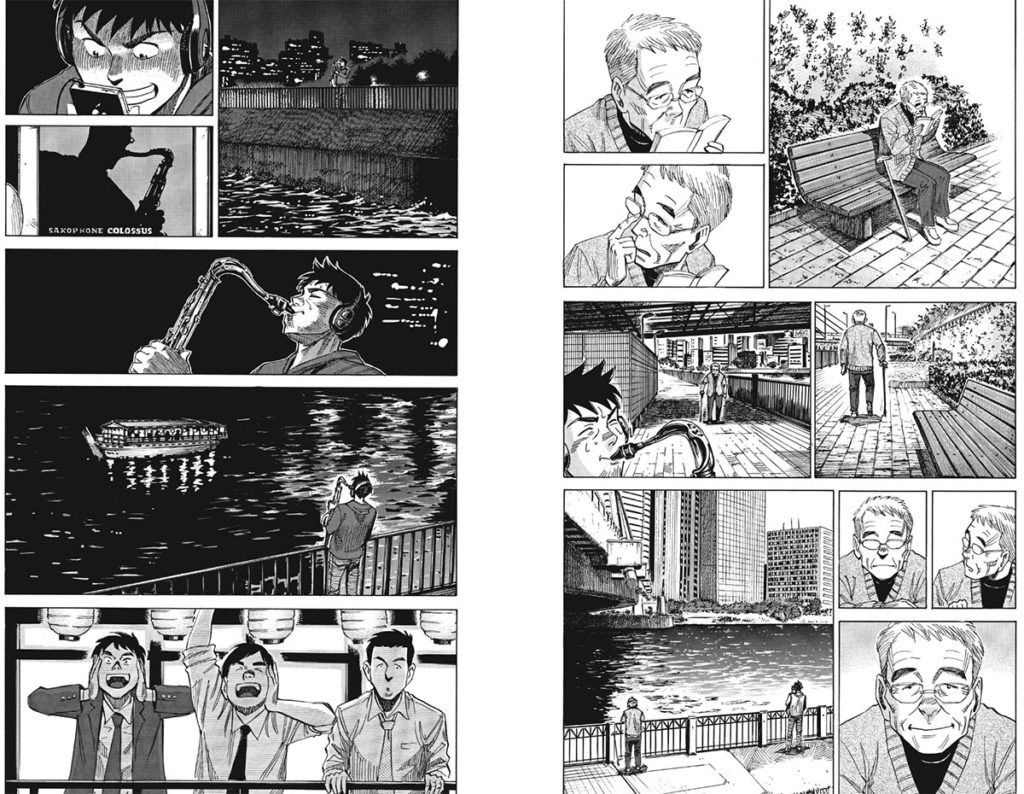
It’s another way of effectively communicating sound. It’s also endemic of the approach that the author is taking to this series, which is to not be afraid of having lots of little short stories, different storytelling styles (like the interviews we talk about in a moment), and bonus material, to round out the world and the ideas that he’s trying to communicate. The plot is always there, you can skip the ‘bonus’ material, but doing lots of differently-formatted things helps build a whole world around Dai and his quest for musical greatness. It’s good stuff.
17:10 Deb’s background info about the mangaka is really interesting! Here’s a link to that Tokion interview again, for your enjoyment.
[Deb:] In this article, Ishizuka mentions that while he was going to college in the US, he had a friend who took up archaeology. When he asked his friend about his choice of college major, his friend replied that he was influenced by Naoki Urasawa’s Master Keaton, a seinen manga series about an archaeology professor / former special forces op who moonlights as a globetrotting insurance investigator – kind of like Indiana Jones, but without the whip and the Nazis.
“…the fact that a manga has changed someone’s life impacted me strongly. Since then, I had been thinking that one day, if I find something that sparks me to share with others, I want to present it in the form of manga”
-Shinichi Ishizuka
Master Keaton is available now in 12 volumes from VIZ Media: https://www.viz.com/master-keaton
The interview also reveals how Ishizuka took up being a manga artist at age 29, and explains that he was inspired by Urasawa, and by another Mangasplaining fave, our-much-loved salaryman manga about climbing the corporate ladder, Kosaku Shima by Kenshi Hirokane (which is only available in English in a few bilingual Japanese-English editions from Kodansha).
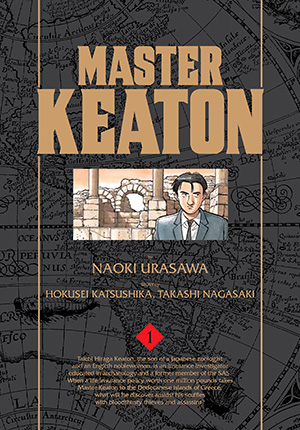
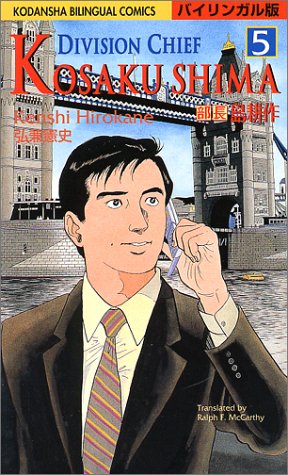
18:30 Yeah, it’s been a rough couple of years. The drummer Tamada dealing with his disappointment over playing poorly really hit home. Effective storytelling, and given a looooot of space to breathe too, which made it even more impactful.
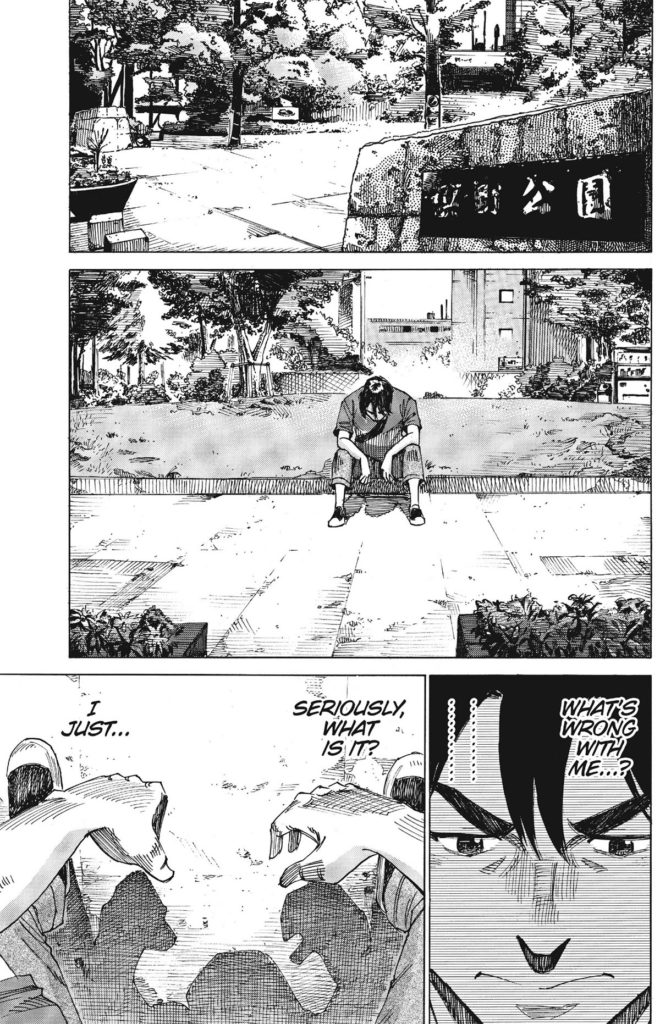
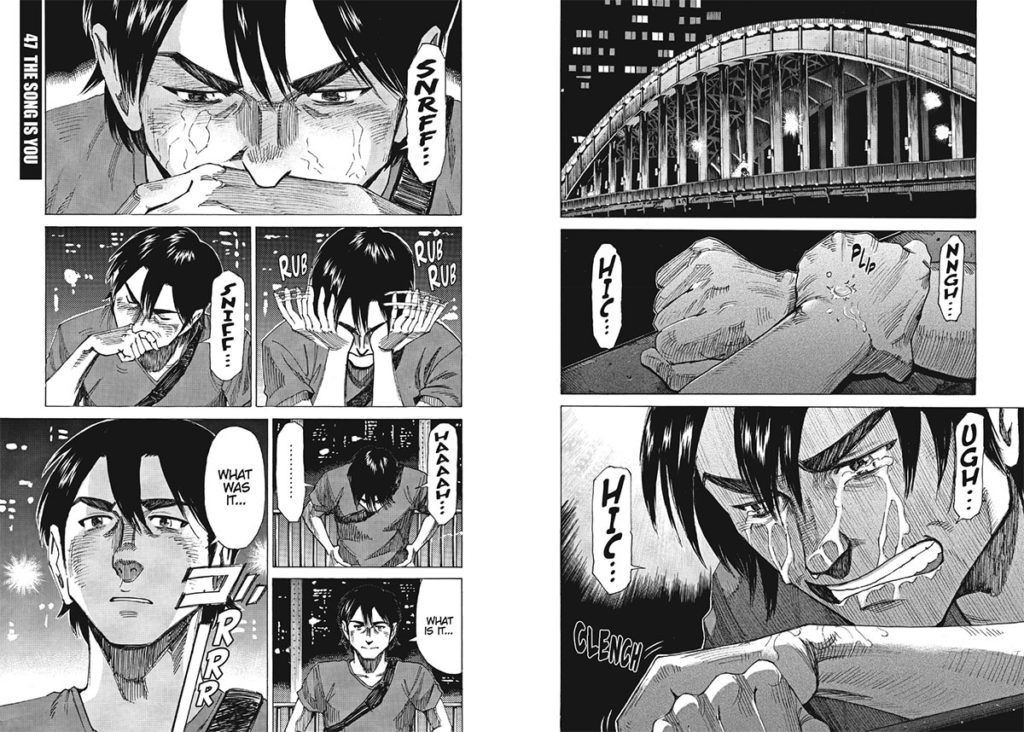
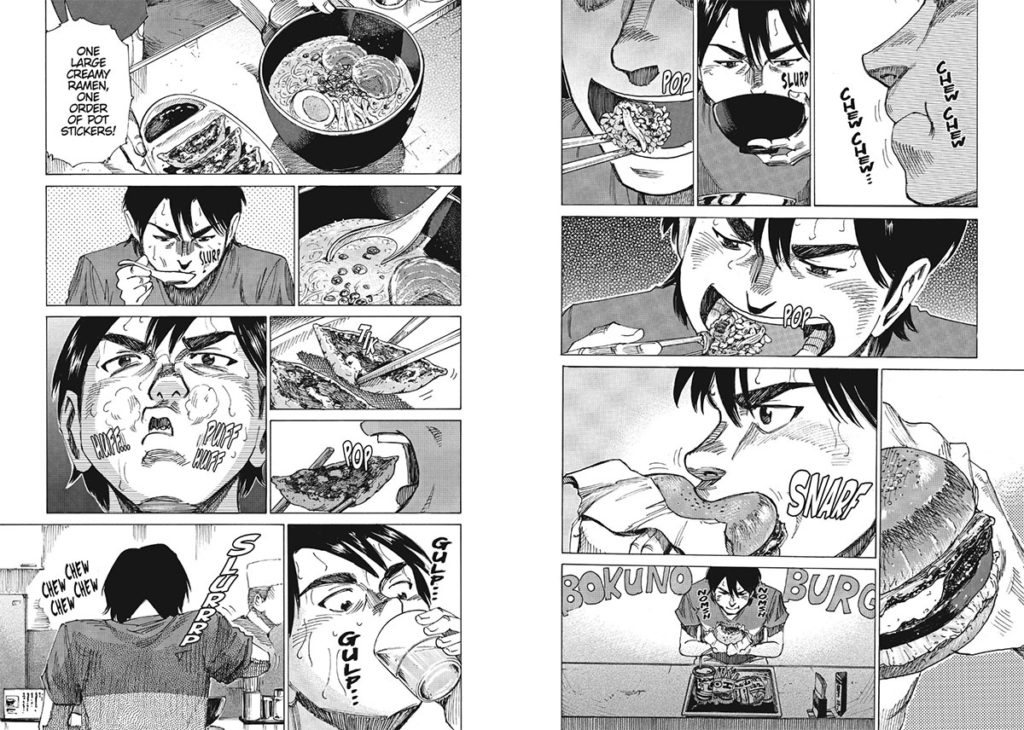
19:00 “You left him behind.” We have to win together. I think this might be one of the most casually revealed controversial Dragonball Z opinions of all time.
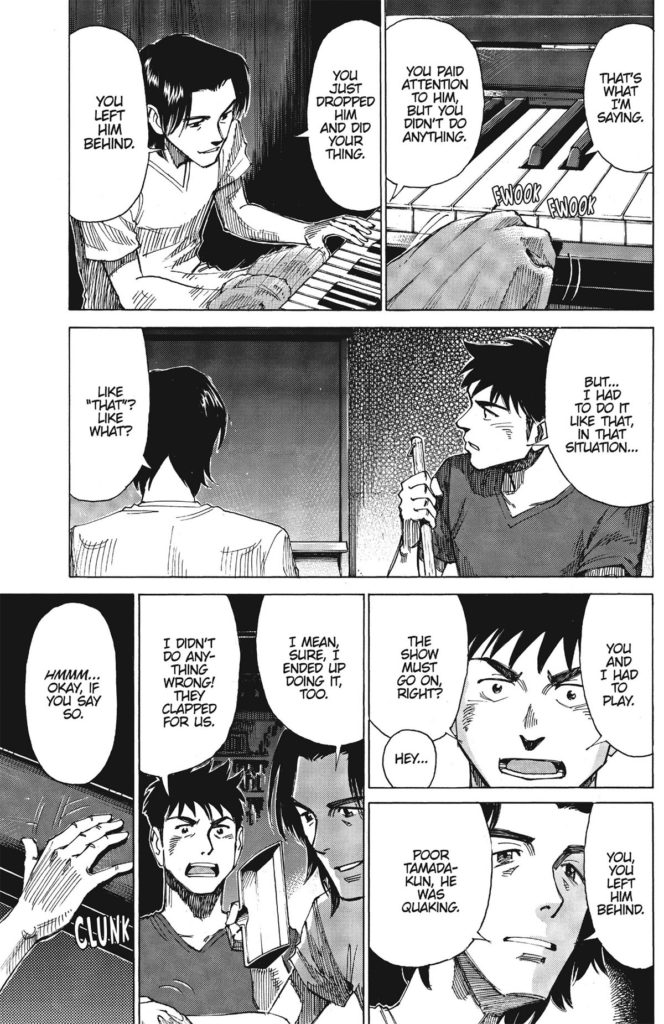
19:50: Just backing up what Chip and David are saying here, but I couldn’t find a good scene to paste. But the subtlety of the plateau in his playing is quite good.
20:45 The humor and the pathos are both delivered really well in this series. Tamada’s whole first professional drum lesson is pretty great, specifically the pay-off of the little girl reacting to Tamada’s drum playing at his lessons is a huge change that mirrors his response to playing poorly. It’s good stuff.
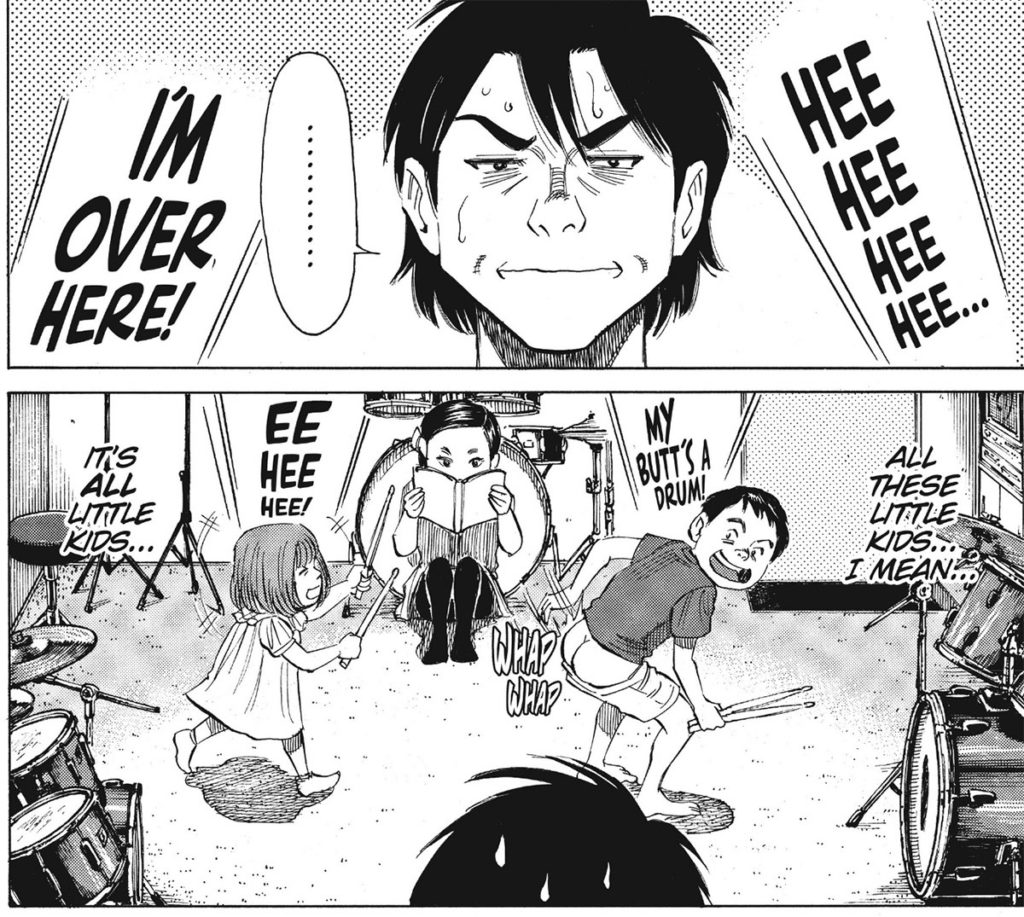
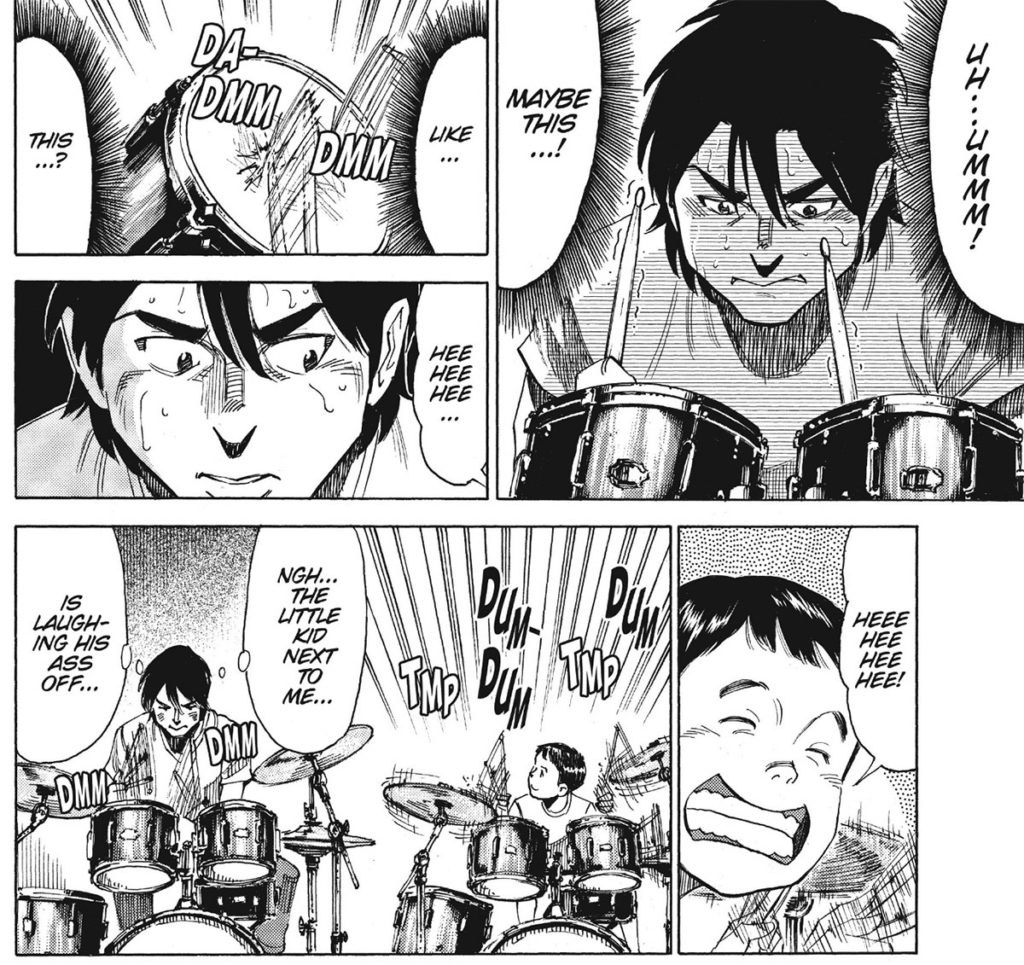
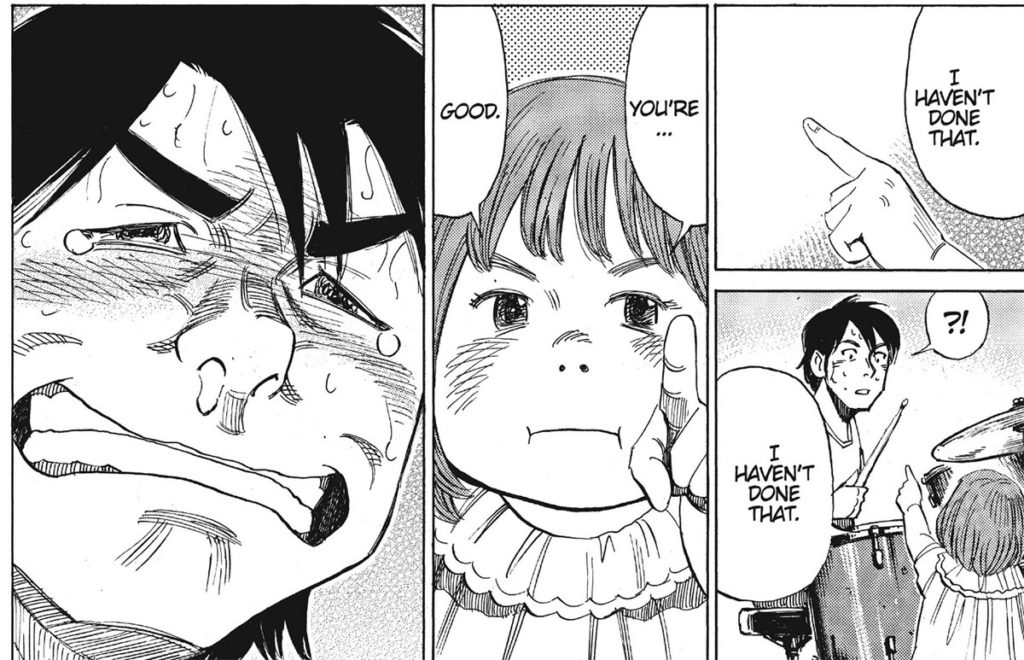
22:15 We could have had a musician Chip Zdarsky instead of a comic book Chip Zdarsky? Mind blown.
25:10 I think I still disagree with Chip on this one, I think you would need Tamada, or a character like him, to be a reader entry-point. The author MIGHT find another character, or another way to communicate with the uninitiated members of the audience (several books we’ve read use a variation on a Greek Chorus)… but they didn’t, so this makes him integral to this story, IMHO.
Specifically to give the reader a clear entry point to scenes like this, Dai brings Yukinori home and then the two have a heated (jazz) nerd conversation
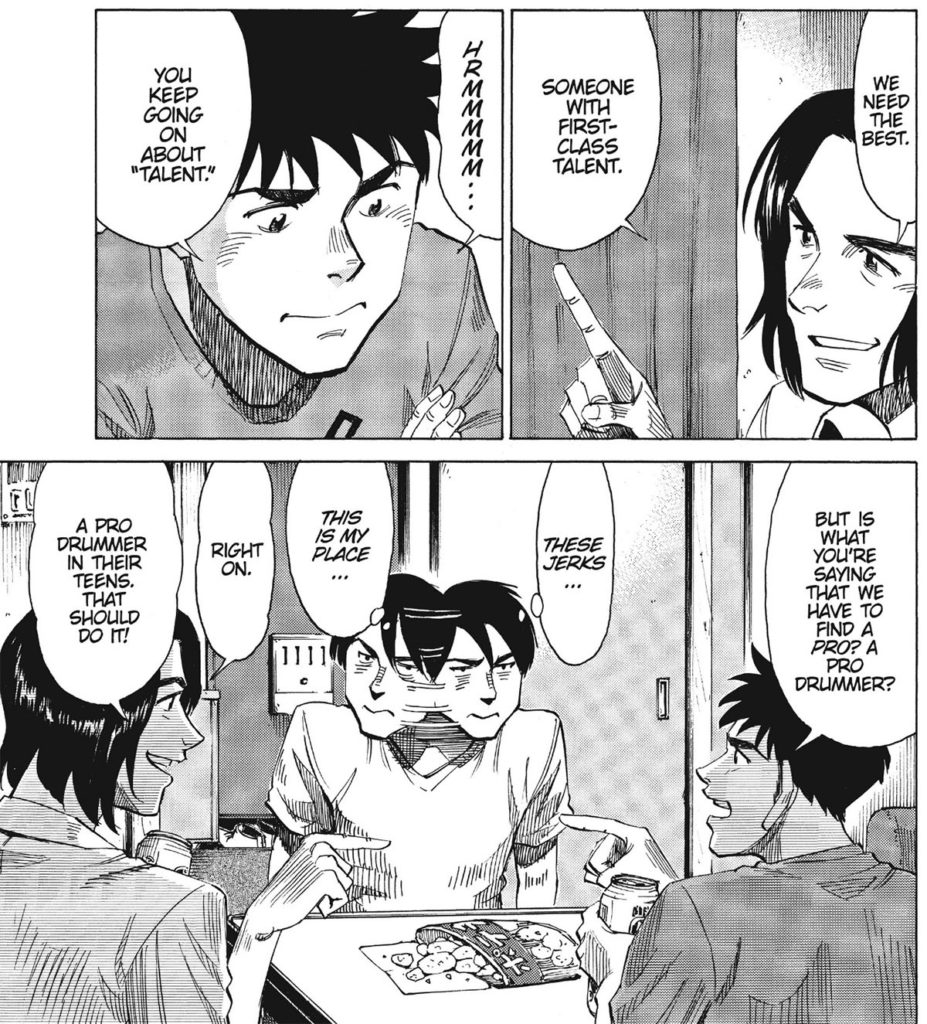
27:10: Deb points out that Ishizuka goes out of his way not to make the arrogant, self-important pianist Yukinori Sawabe totally irredeemable, he’s just driven. The moment where he realizes that Dai is not only good, but better than him, and that Dai has a spark he doesn’t have, is a big deal. It shows Yukinori’s human side that he doesn’t often show to others.
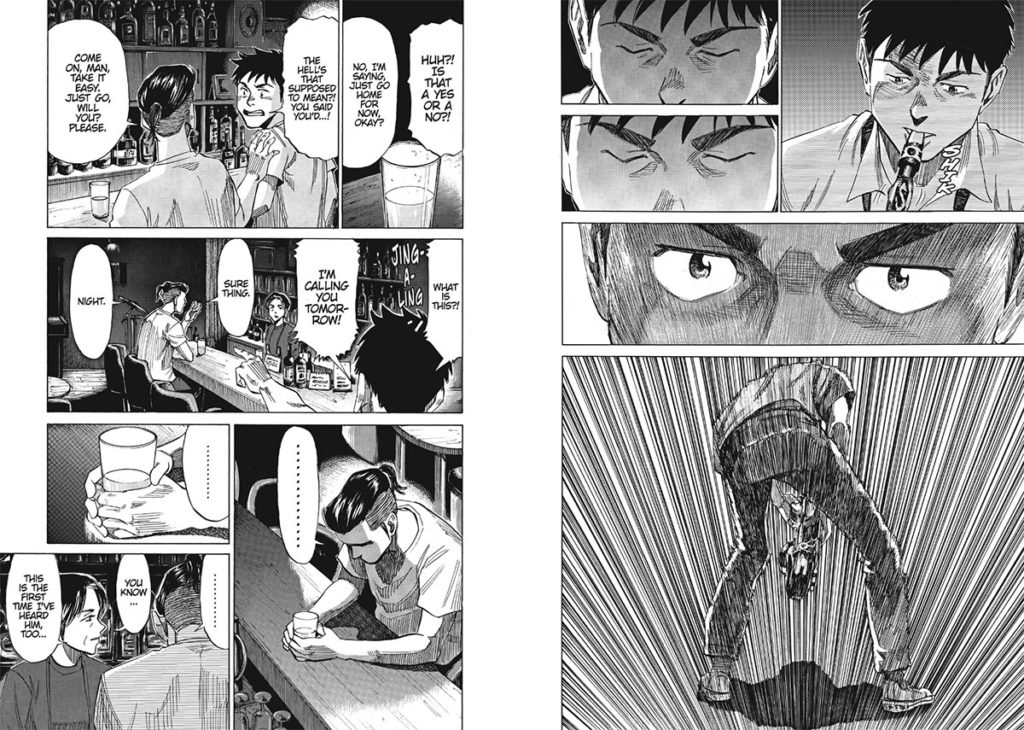
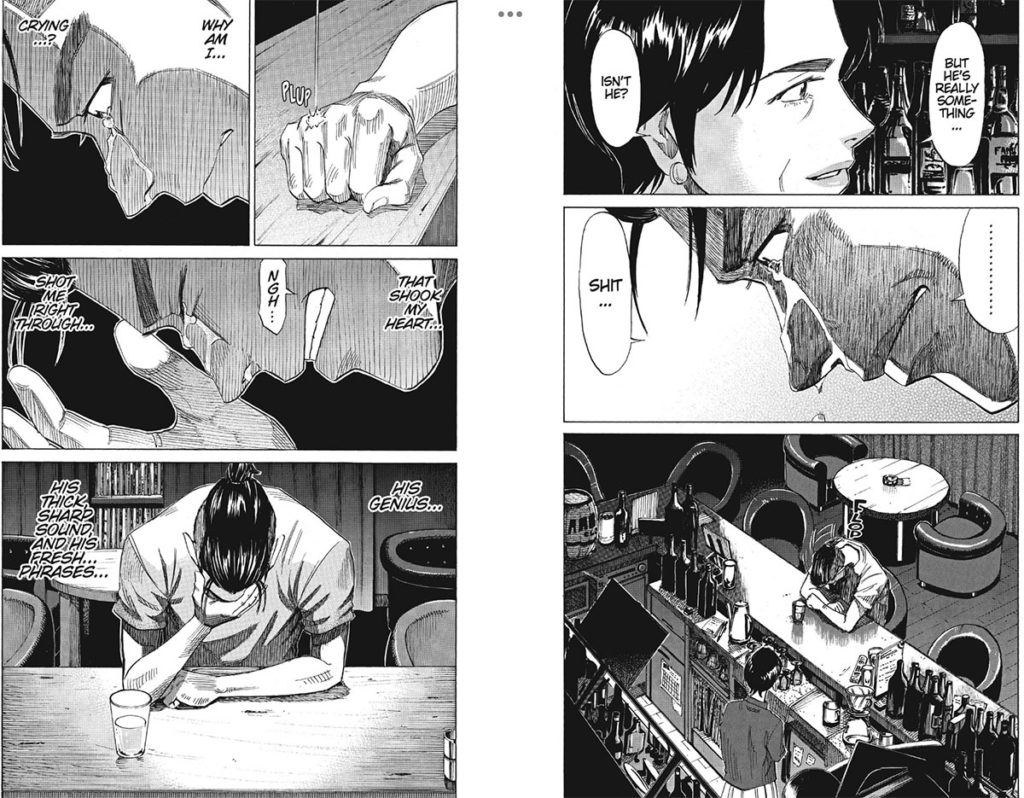
29:20 It’s interesting that volume 6 ends on this note, the line that Deb and David are mentioning, “There’s one thing that people who go on winning have in common…” bit. Because it’s set in the future, it’s unsure if it’s a condemnation or a celebration. All we learn, eventually, is that whatever this commonality is, pro musician Moto Kawakita isn’t into it [anymore].
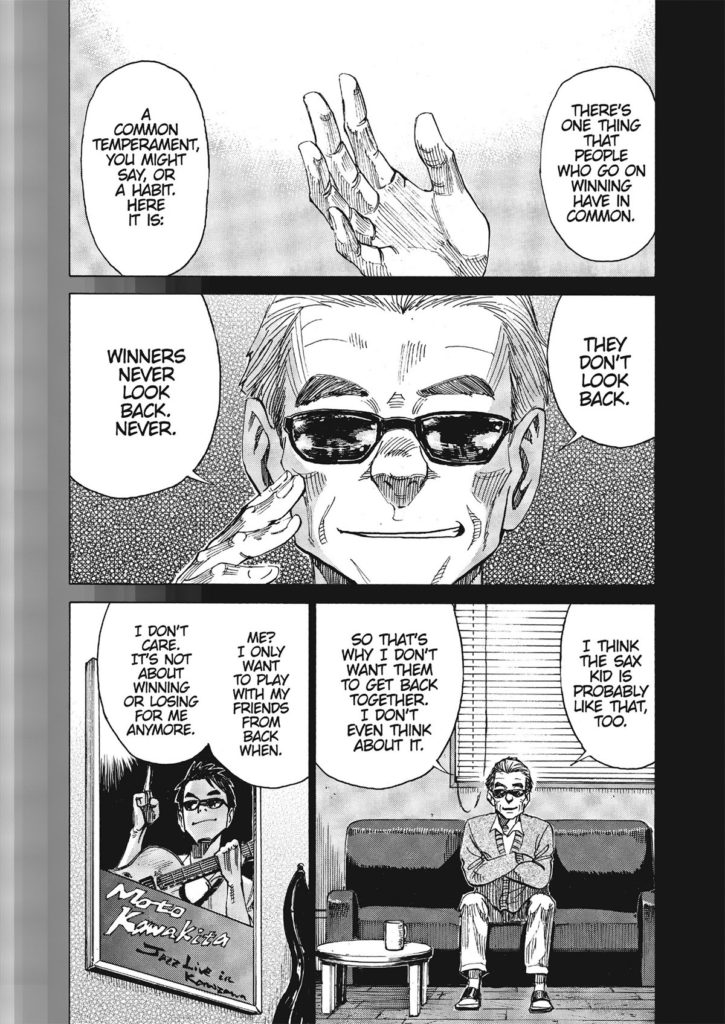
30:30: “I’m gonna go get my ass kicked.” Such a great cliffhanger to end volume 6.
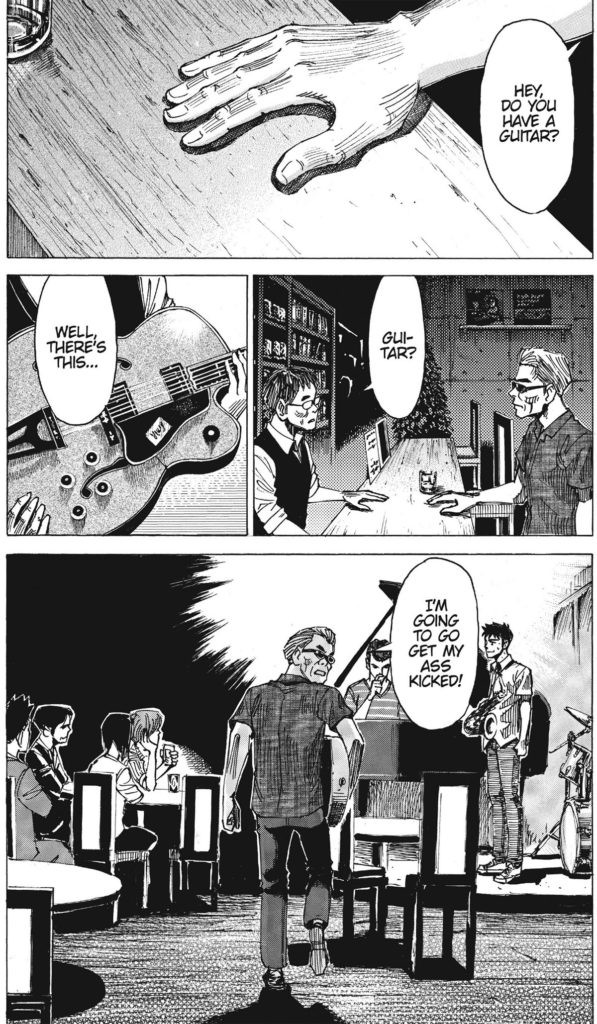
31:10 As mentioned above, with the ‘commonality’ quote, there are big time jumps in Blue Giant, with the last bit of story in every chapter flashing forward 10 to 15 years. It’s a little jarring at the end of volume 5, because it was more properly introduced as a storytelling device in volume 1 and then you’d just be ‘used’ to it.
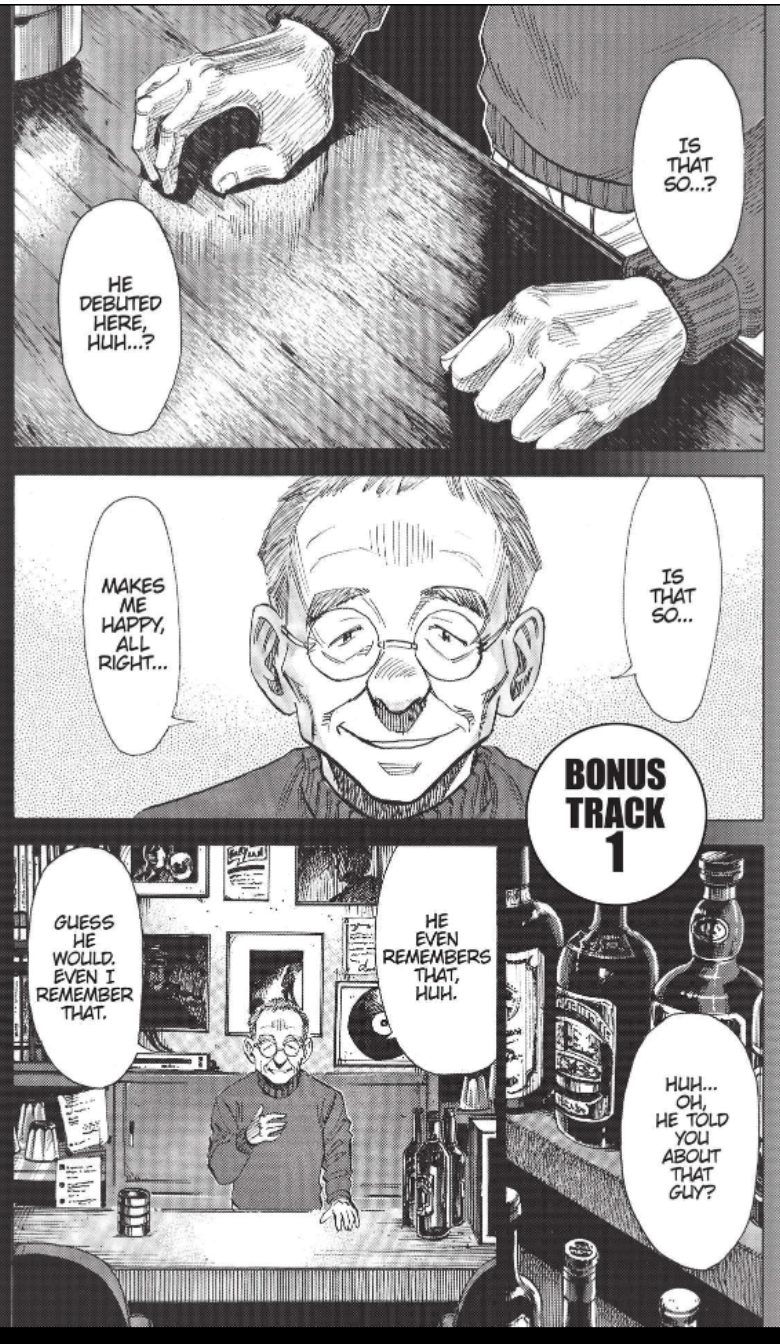
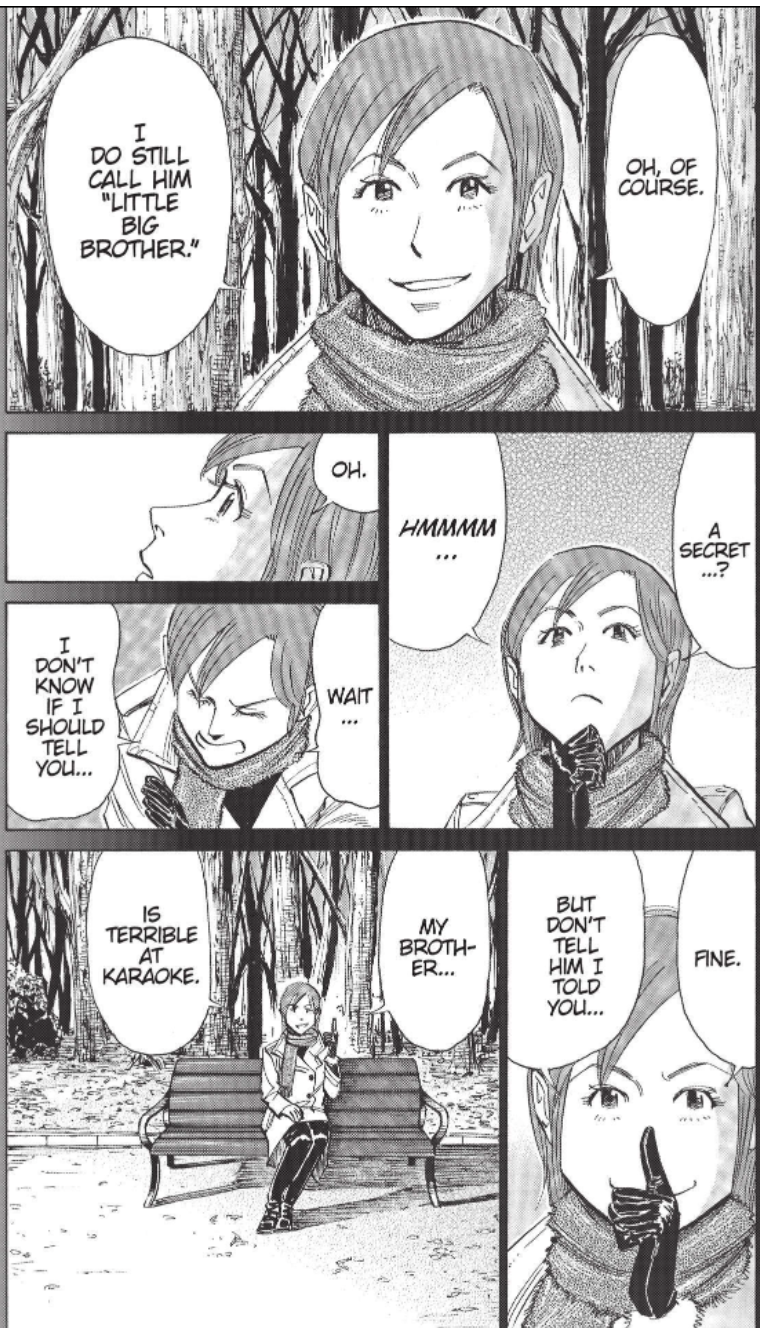
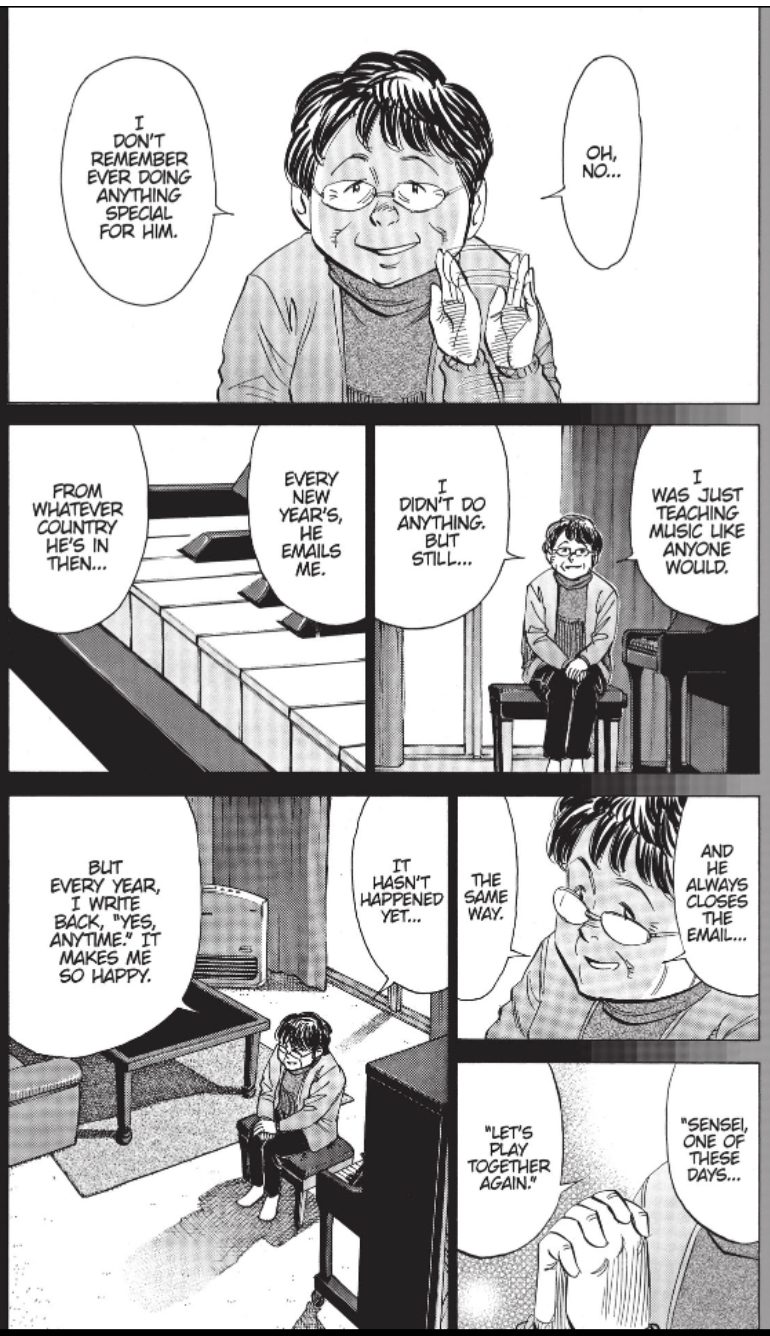
Chip mentions Better Call Saul, which I haven’t I actually watched. I was thinking about how the future interview about a musician and discovering where they came from is the framing device for the film Velvet Goldmine, which we last brought up during our Paradise Kiss episode.
33:10 That’s some Dead-ass weird usage.

35:09 Yeah, we gotta talk about the sound effects in this book. It’s not that the sound effects in English are necessarily bad (although ‘toooooot’ is hilarious), it’s the entirely inconsistent way that the Japanese sound effects are sometimes removed, sometimes not, and are inconsistently glossed.
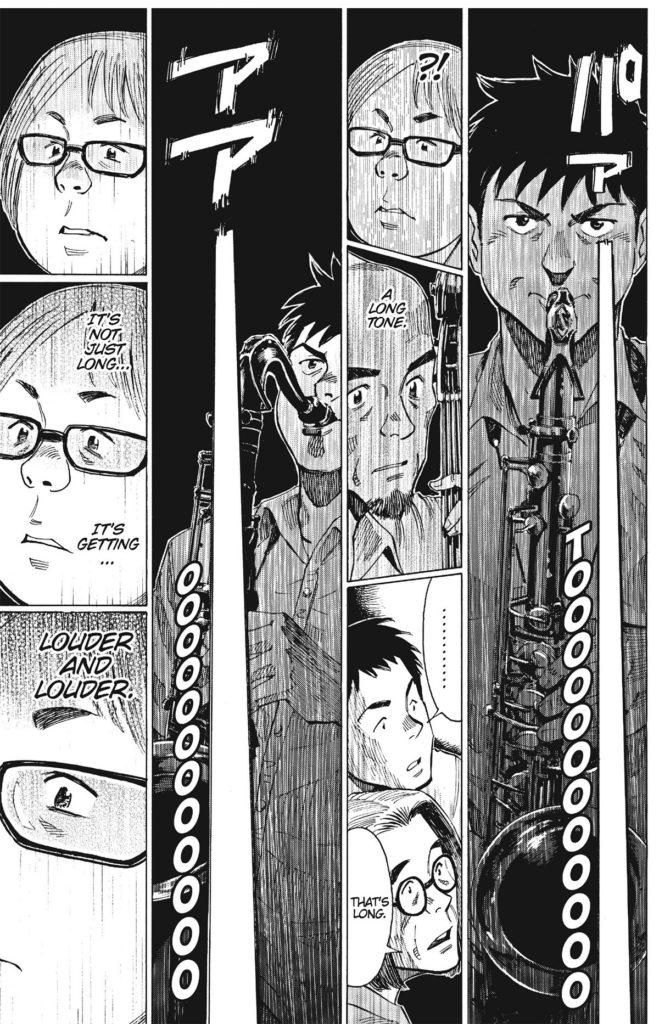
My take is: If you’re not going to do a full Japanese sound effects replacement, don’t replace any of them, and just gloss all of them, like other publishers do. There’s no shame in it.
[Deb:] Alternately, with Naoki Urasawa manga (like his current series, Asadora), the Japanese sound effects are left untranslated, with no tiny English translation text next to it or in the margins. You have to go to the last page to read a list of what the sound effects actually say.
This approach is maybe the least disruptive/least cluttered approach to the original manga artwork, but might leave behind English readers who can’t read hiragana or katakana (Japanese phonetic characters)?
[Christopher:] That’s also what’s going on with the new edition of AKIRA in hardcover from Kodansha, and quite a few other titles. Personally I’m not a fan, even though I can read katakana/hiragana/etc. It just doesn’t feel fully translated, to me.
[Deb:] What do you think, Mangasplaining listeners? Add a comment about what you prefer, as far as translating / not translating manga SFX below.
[Christopher:] Here’s a few more images showing the inconsistency of translated/not-translated effects that we discuss.
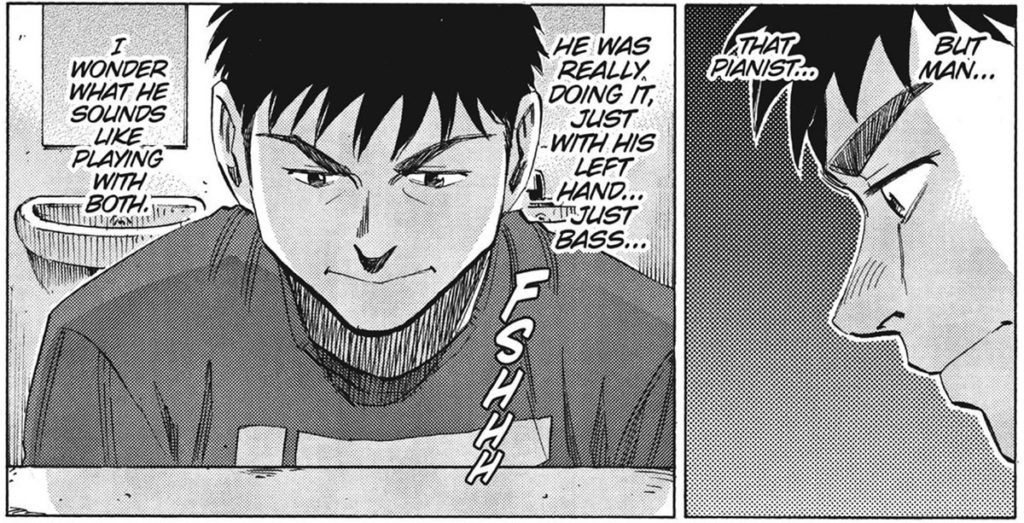
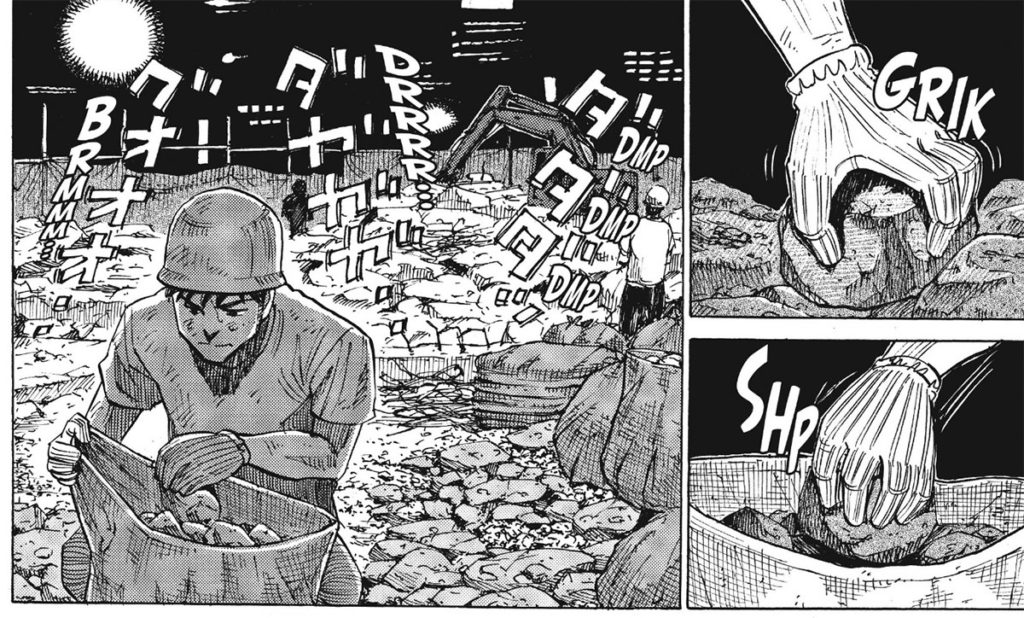
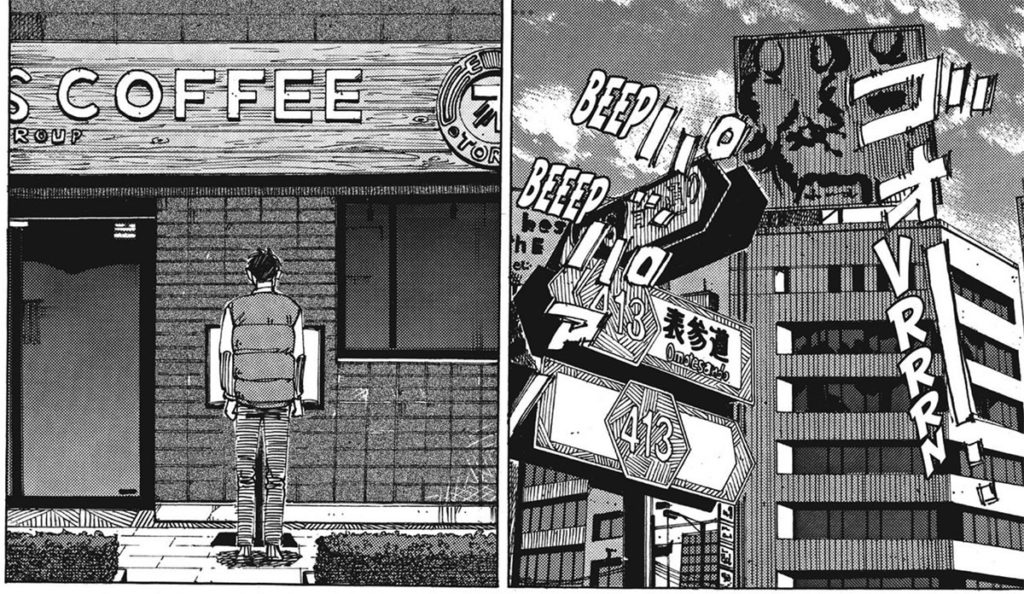
39:44 This is another part of what I was talking about up top, where Ishizuka is just pulling in all kinds of stuff and using it to build a story. The near-complete lack of diagonal panels is a big deal I think, it creates a very steady ‘rhythm’ to the panels that never breaks in the whole thing. It also does give heavy cinematic vibes, scroll back through the posted images to see what we’re talking about…!
That said, there are a very few moments in this book where we get a slight diagonal, a little bit of deliberate extra ‘oomph’ in the energy of the scene, and it’s a bit shocking!
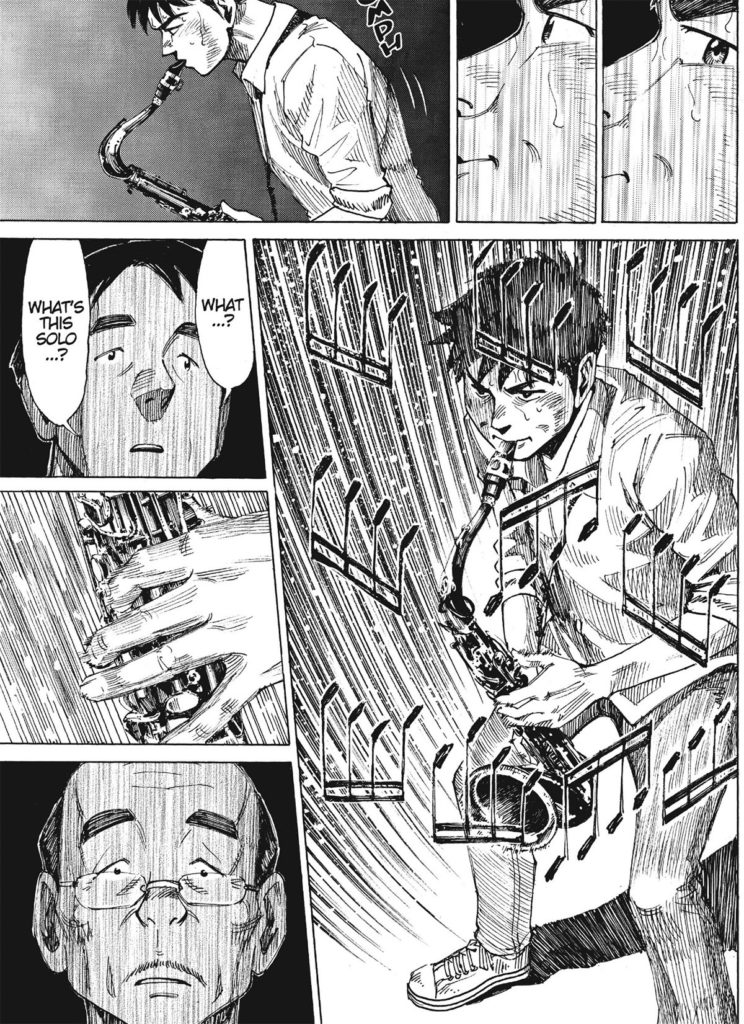
It’s not in every music scene either! This is actually something that also comes up in a few weeks on our Cross Game episode too, how diagonal panels are incredibly rare there, and when and why they’re used.
40:30 Deb references another music manga, Those Snow White Notes by Marimo Ragawa, which is about Japanese shamisen (stringed instrument) players. In particular, she thinks that the series is much more successful in its animated interpretation, which features virtuoso performances by the Yoshida Brothers.
It’s currently streaming on Crunchyroll: https://www.crunchyroll.com/those-snow-white-notes
If you want to check out Those Snow White Notes, here’s the Kodansha website page for it. It says volumes 1-8, and 10, are available? That seems like an error.
[Deb:] Yeah, it’s kind of weird. Kodansha released the first 8 volumes of Those Snow White Notes manga every 2 weeks for 2 months while the anime was airing in 2021, then put it on indefinite hiatus until they quietly resumed publication of this series by adding it back to their release schedule on their website. The long-awaited volume 9 of this series will return in late July 2022 (not that I’ve been checking Kodansha’s upcoming releases pages almost every week).
43:10 David references the music/slice-of-life drama anime Kids on the Slope. Based on the manga series by Yuki Kodama (published by Shogakukan, but isn’t available in English), this slice of life story josei story follows the lives of three young people and the friendships they make through jazz music, and the relationships that develop between them. Interestingly, the music for the series is produced by Yoko Kanno (who I bring up in a few minutes)…!
Kids on the Slope is available on DVD from Sentai Filmworks.
Here’s that cover of Moanin’ that David mentions.
David also brings up Yuji Ohno’s music for Lupin the 3rd, a generational manga and anime story featuring the world’s greatest thief. Gotta listen to some of that too…!
44:30 [Deb:] Blue Giant as a manga is still running, but the major arcs of the series are published under different names and have new number ones… something of a rarity in Japanese manga publishing. The series we’re reading, Blue Giant, was serialized in Big Comic Magazine from May 2013 to August 2016, and ran for 10 volumes.
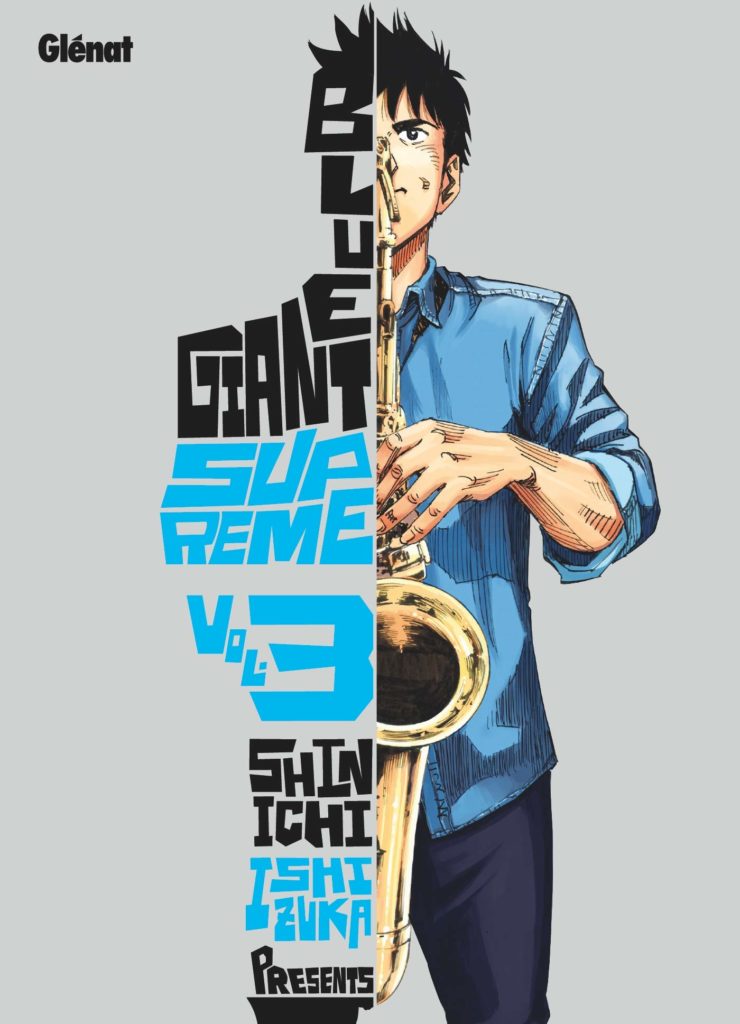
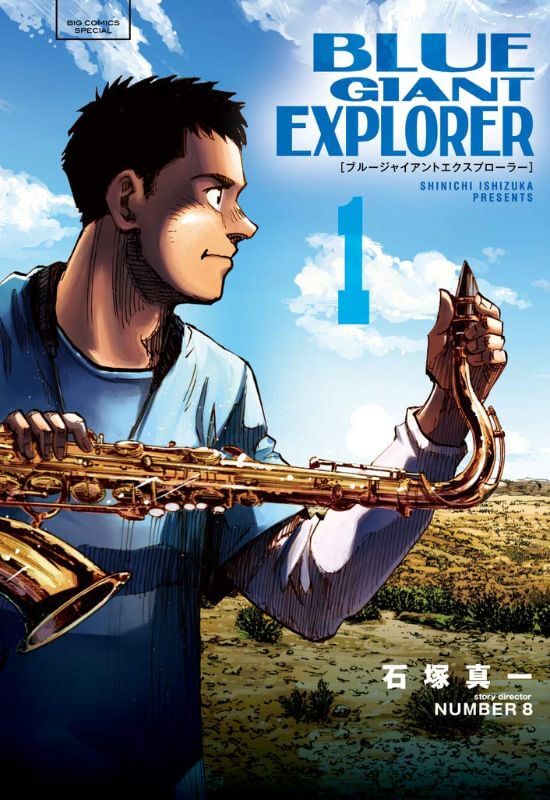
Blue Giant Supreme started in Sept 2016 – April 2020, and follows what happens next after Blue Giant volume 10, as Dai goes to Europe. It’s a 10 volume series, and is currently available in French through Editions Glenat, but it’s not available in English (yet).
Blue Giant Explorer started in May 2020, is currently running, with Vol 6 coming out in Japan in late June 2022. In this arc of the series, Dai goes to the land where jazz originated, North America. His journey starts in Seattle, and takes him down the West Coast to Portland, San Francisco and Los Angeles (so far).
Blue Giant the manga has strong ties to jazz even off the page – Here’s a promo video for the Blue Giant x Blue Note Tokyo nights.I think it’s fabulous that this world renowned live music venue (the So Blue nightclub in Blue Giant is probably modeled after Blue Note!) has held these type of events to promote both live jazz and the manga at the same time.
Another example of Blue Giant’s ties to jazz is its collaborations with legendary jazz record label Blue Note Records. There are two official Blue Giant x Blue Note CDs – one for the 80th anniversary of Blue Note and another for Blue Giant Supreme. Neither are available in N. America, but you can probably get them as imports.
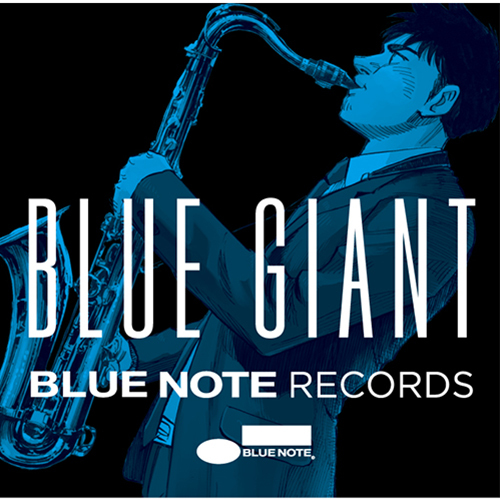
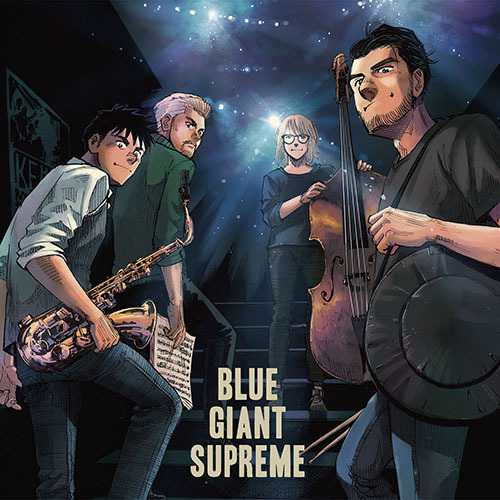
[Deb:] It’s also notable that jazz label Blue Note Records has also given Blue Giant its ‘blessings’ to include music from its label, because including music, lyrics, or references to songs or real people usually adds another layer of approvals and therefore additional complications to licensing manga about music for publication overseas.
Some examples that come to mind include two of my favorite, but as yet unlicensed (not even in French!) manga series, Boku wa Beatles (We are The Beatles) by Tetsuo Fujii and Kaiji Kawaguchi (creator of The Silent Service) from Kodansha, and Shiori Experience: Jimi na Watashi to Hen na Oji-san by Yuko Osada and Kazuya Machida from Square Enix.
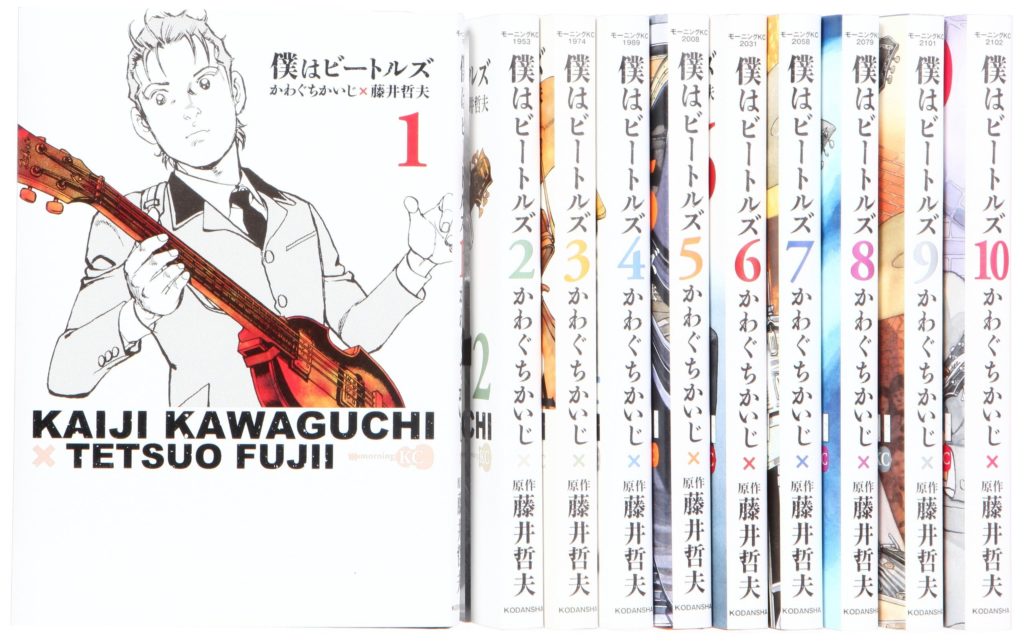
Boku wa Beatles imagines the adventures of a Japanese Beatles cover band getting transported in time back to the early 1960s before The Beatles hit it big internationally. They know all of the legendary band’s songs by heart – so what happens when they play them for adoring crowds in Japan before the real Beatles do? If this sounds like the plot of the movie Yesterday, well, Boku wa Beatles pre-dated that 2019 British feature film by 9 years, so do with that info what you will.
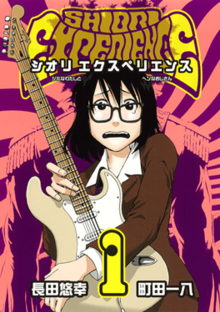
Shiori Experience is a wacky seinen manga comedy about a mousy high school teacher who was once in a rock band with two girl friends when she was younger. She encounters the ghost of Jimi Hendrix in her closet, and when the legendary rock guitarist plugs a guitar jack into the back of her neck, her inner rock goddess is re-awakened and, well, all kinds of craziness happens after that.
If you’re curious about either title and don’t mind reading some Japanese, both are available via BookWalker Japan:
Boku wa Beatles (10 volumes, complete): https://bookwalker.jp/series/4513/list/
Shiori Experience (18 volumes, ongoing): https://bookwalker.jp/series/21290/list/
45:20 The omake in this series, or the back-up material created by the author, is really good. “Funny thing about paper, it doesn’t make sound.”
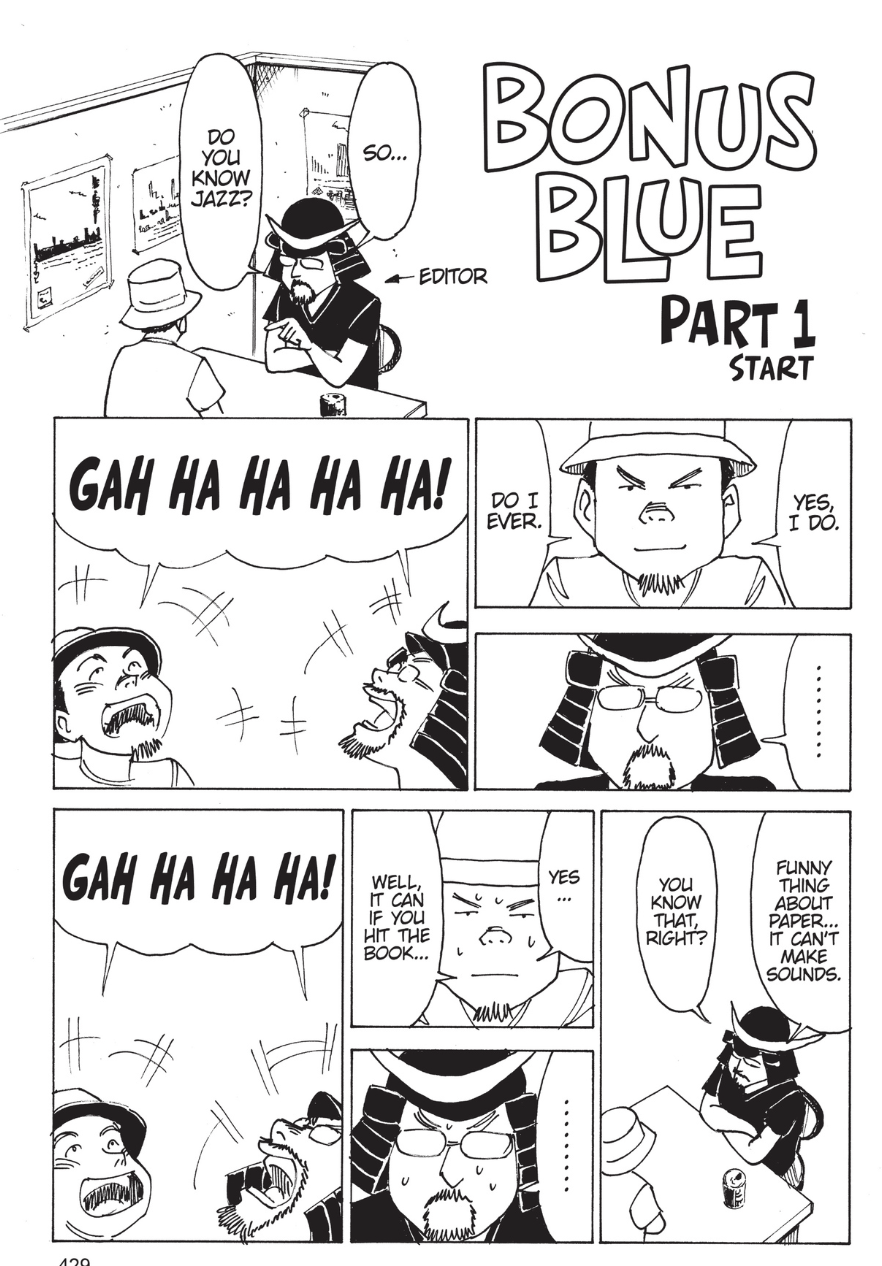
46:10 Translating from katakana can have you get some weird stuff, if you don’t know what the original is referencing. Moanin’ or Mornin’, nubin of garlic vs. clove of garlic… But this extends into translating or subtitling other media too, even from English… to English.
47:30 David references Dai going absolutely HAM on the saxophone during their first (real) performance, and it’s a great image and spread. It conveys the power of what they’re doing, it uses musical notes to good effect, and the reaction shots elevate the moment too. All really good stuff.

48:38 [Deb:] So funny thing about that Hieronymous Bosch butt music comment – yes, someone actually zoomed in on this one teeny-tiny part of the “Hell” section of his triptych Garden of Earthly Delights, and thought, hey, what if we tried to play the musical notes written on this character’s bum?
And because well, maybe you want to hear what hellish butt music might sound like, here you go:
[Christopher:] That’s wild. It’s a little unsettling too.
51:20 Speaking of wild stuff, the idea that we’re actually overwriting the ‘sound’ that is being ‘played’ within the manga with music that’s inside our heads, kinda blew my mind a bit. I wasn’t even aware I was doing it. I’m glad we could share these songs, thanks so much to David for the killer edit job here. Here’s links to those songs if you wanna listen to them!
Yoko Kanno – Tank!
Art Blakey and the Jazz Messengers – Moanin’
John Coltrane – Giant Steps
Art Ensemble of Chicago – Theme to Yoyo
Please sound off in the comments with your own favourite jazz songs!
Just as some bonus content, my (Christopher) other go-to jazz song is Stompin’ at the Savoy, I think the upbeat (not Latin-tinged) version that Sarah Vaughan sings. 🙂
53:10 The first set of flyers are just hilarious.
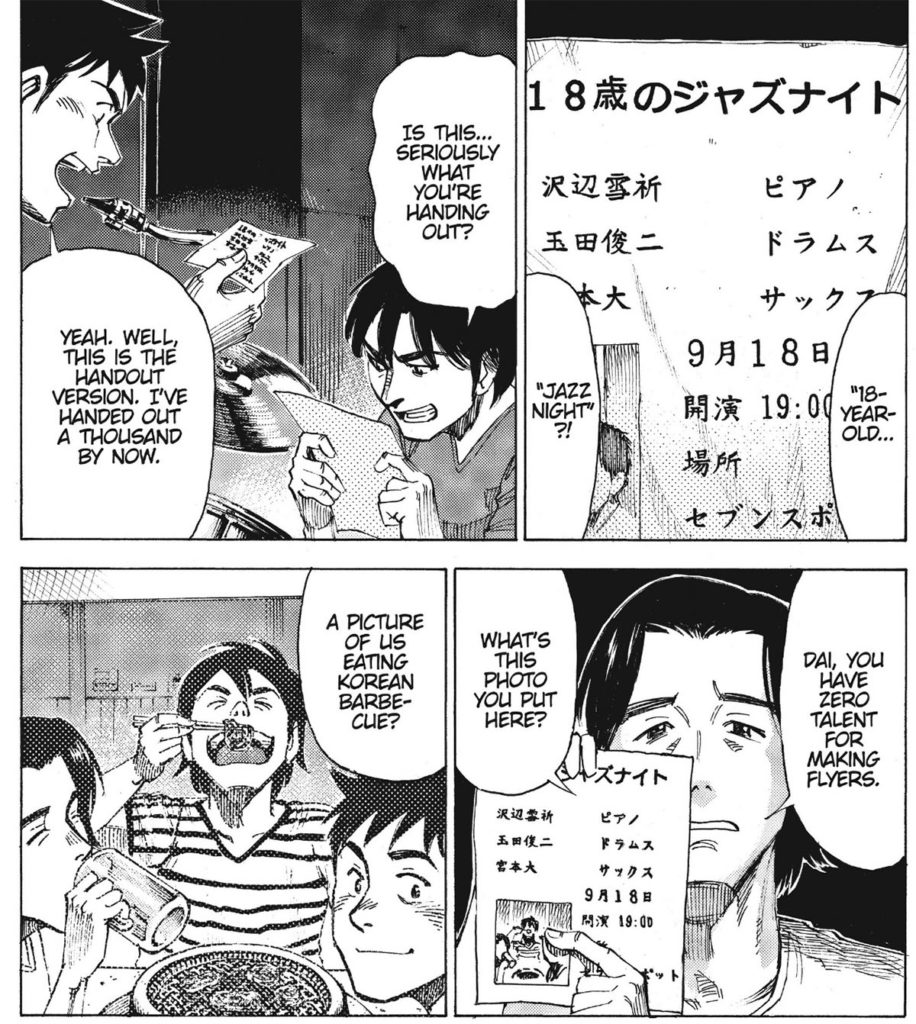
55:00: JASS!
Not this:
But actually this:
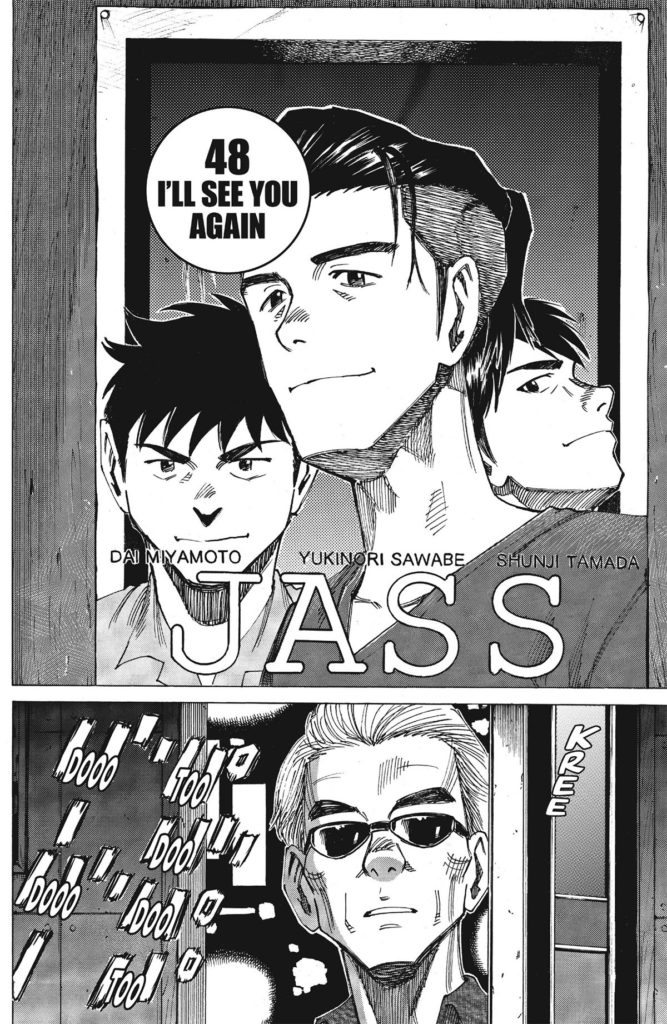
[Deb:] What’s the story behind the band name “Jass” ? It’s not as silly as Chip / David thought! We find the story behind “Jass” when we get to volume 7-8. This excerpt is from Vol. 7, pg 57-58
57:10 Meanwhile, everything you thought you knew about assholes in bands… is true!


Maybe it’s for the best that we got comic book Chip Zdarsky after all…!
59:30 And that’s this week’s episode! Stay tuned, cuz after the break we pick new books!
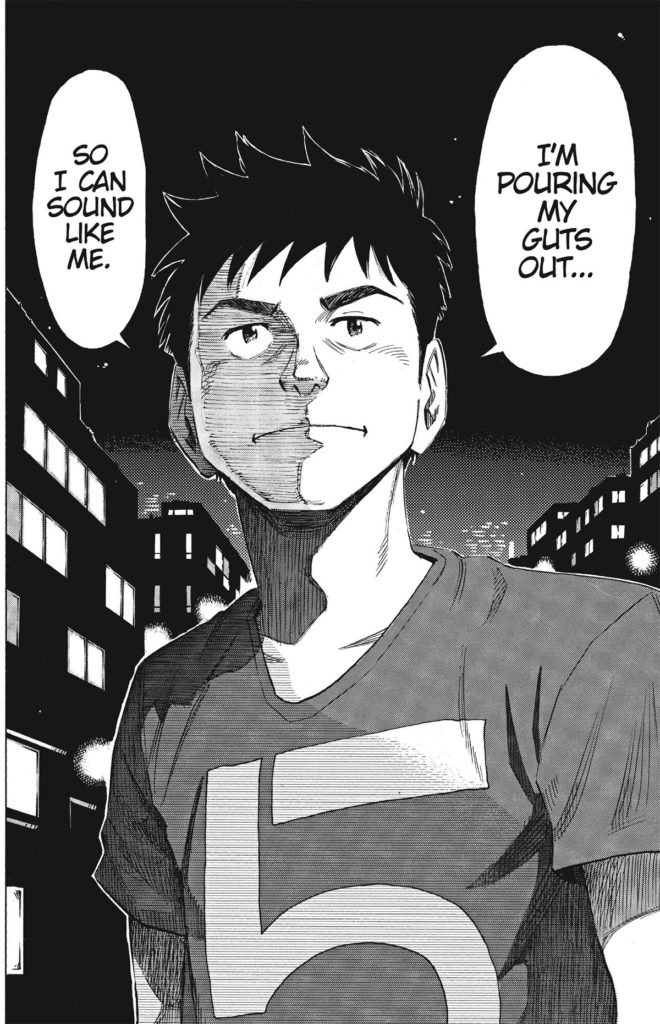
1:01:30 THE BREAK!
Alright everyone, it’s time to pick some new books!
Here’s our next three reads for Mangasplaining, in order!
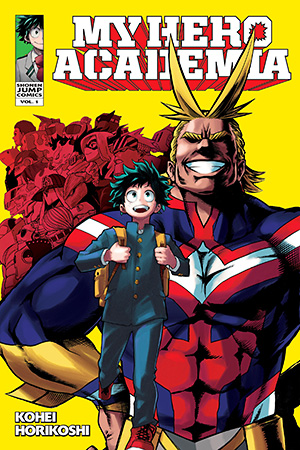
Christopher picks: My Hero Academia vol. 1, by Kohei Horikoshi, published by VIZ Media. The first 3 chapters (of 7) of this book are available to read for free on the Shonen Jump app and website, and it’s available in basically every library collection in the world.
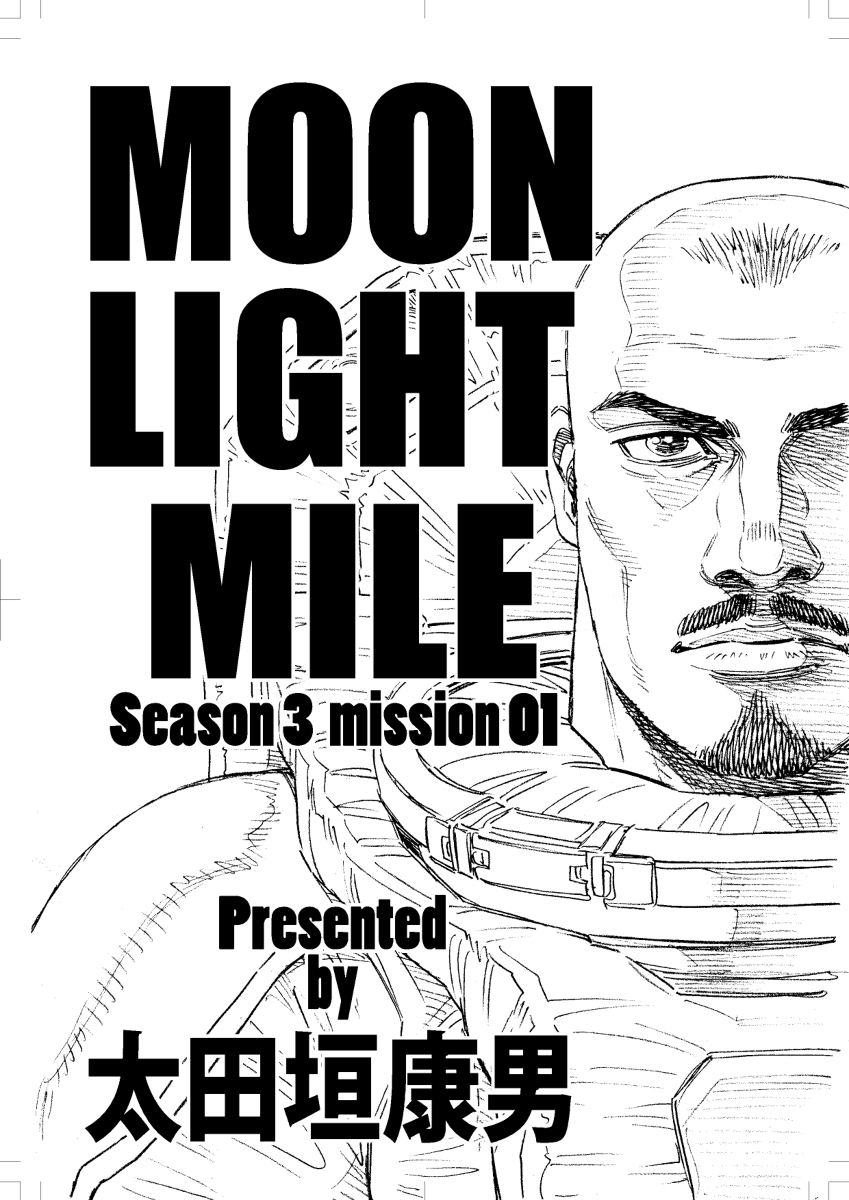
David picks: Moonlight Mile (Japanese), by Yasuo Otagaki, published on PIXIV. This series is currently being serialized by the author online in Japanese, seemingly from his roughs or genga(!). David wants us to try something a little different for his pick, and that’s cool! You can read the first three chapters for free here:
Moonlight Mile, season 3, Ch. 1: https://www.pixiv.net/en/artworks/94992075
Ch 2: https://www.pixiv.net/en/artworks/96248194
Ch 3: https://www.pixiv.net/en/artworks/97297521
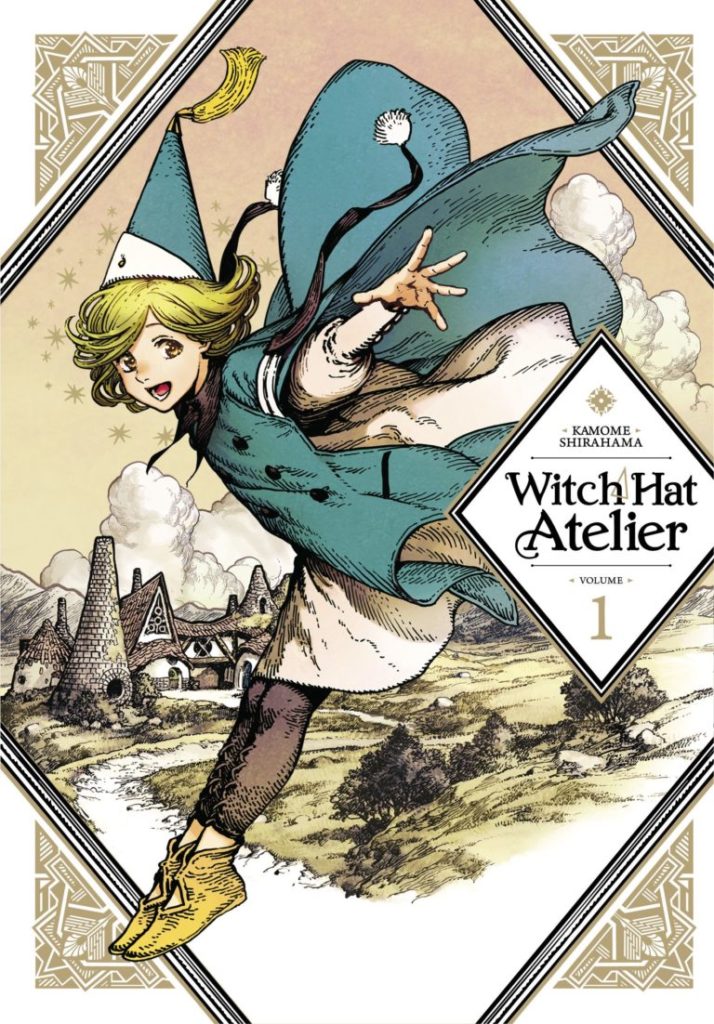
Deb picks: Witch Hat Atelier vol 1, by Kamome Shirahama, published by Kodansha. There’s a full-preview of the first chapter of this book at the link, and this is ALSO one that’s available in more-or-less every library in North America. Or go buy a copy! 🙂
As a last note here, I TOTALLY messed up, and Deb is right that Kamome Shirahama has only ever made a Doctor Strange illustration. Here it is, btw:
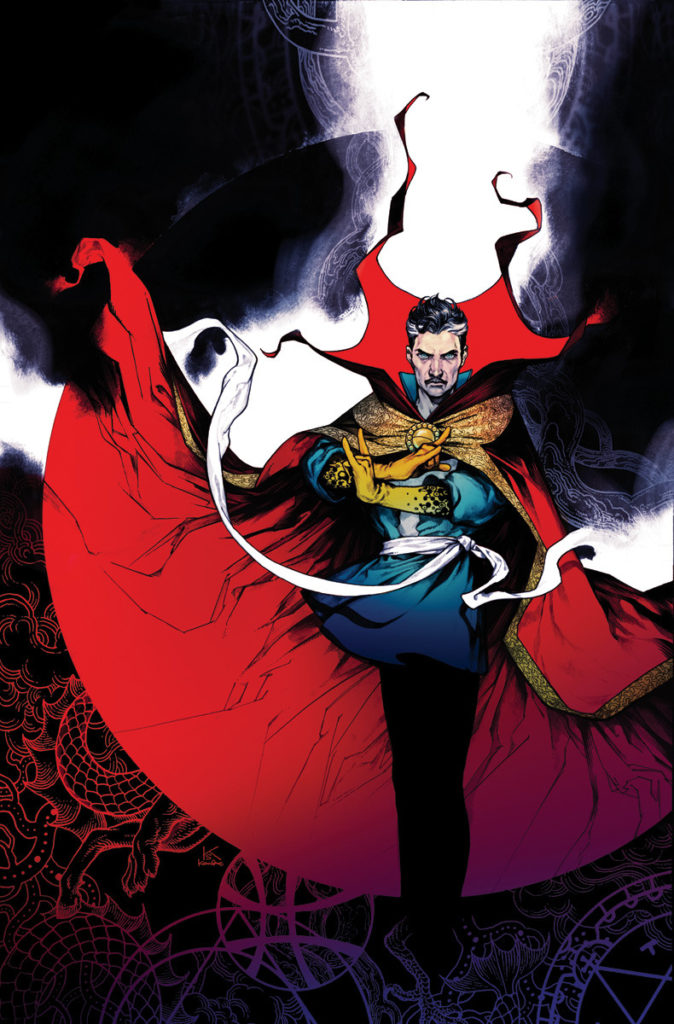
There actually was a Doctor Strange graphic novel produced exclusively for the Japanese market, but it’s by a creator named Haruichi, not Shirahama-sensei. Whoops! Here’s the cover:
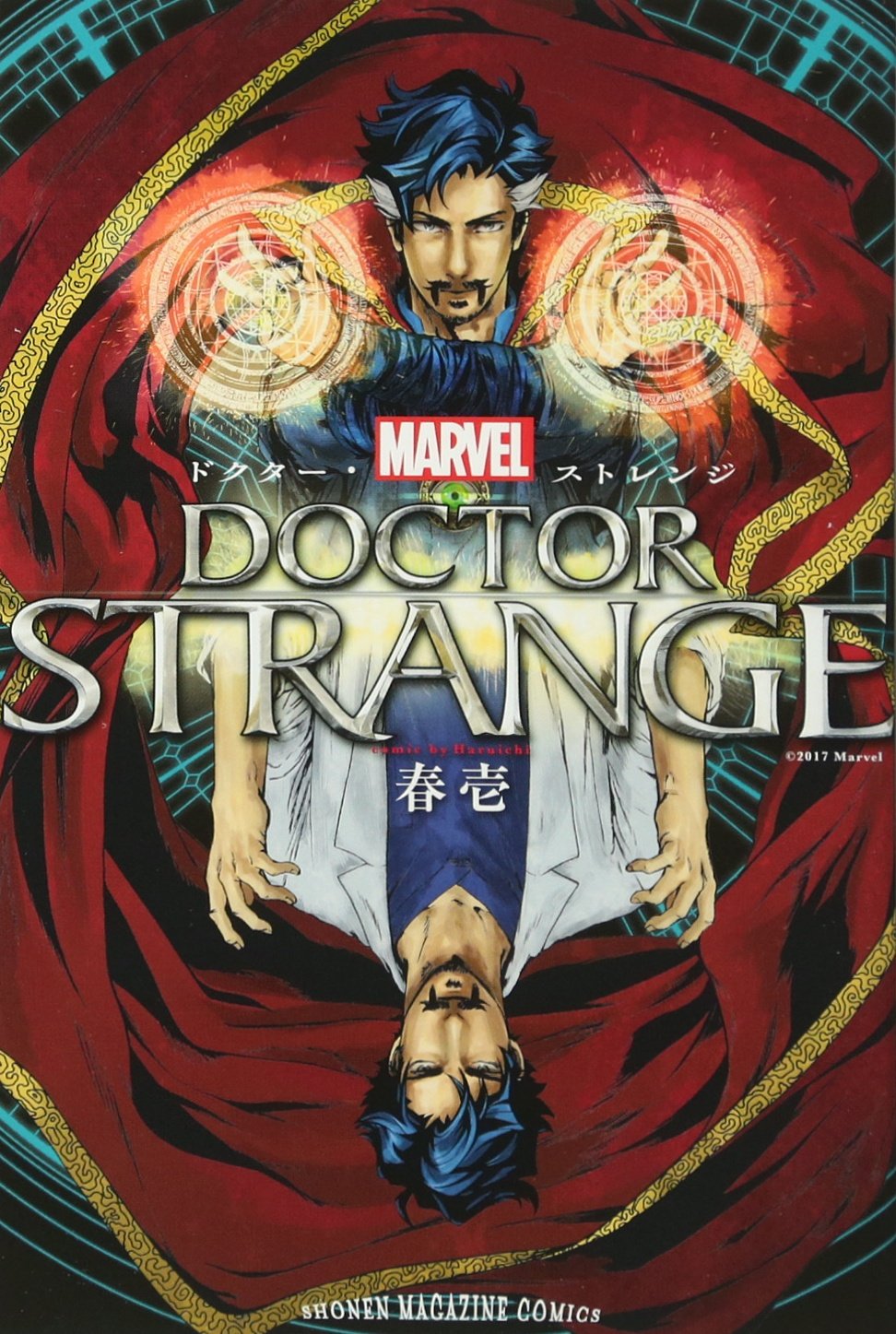
Anyway, sorry for getting that wrong! And also it’s really weird that this hasn’t come out in English yet, considering Marvel is printing Marvel stuff from Japan and VIZ is printing Marvel stuff from Japan. Hell, even Yen is printing Disney stuff from Japan, at this point, with their Star Wars books. Anyway, maybe the licensing is weird because this is a Kodansha title and the other Marvel stuff is Shueisha? Who knows.
Anyway, THAT’s this week’s episode of Mangasplaining! Thanks for not being tooo upset that we took a week off. We needed it.
Please support your local comic and manga specialty shop when purchasing these books, and you can find one near you at comicshoplocator.com. You can also check your local library for print and digital lending options, they have TONS of manga! Also, check us out at MangasplainingExtra.com, we’re doing cool stuff over there, like that Kaz comic up top. Finally, thanks to D.A.D.S. for their musical accompaniment this episode.
See you again next week for Dai Dark, by Q Hayashida!
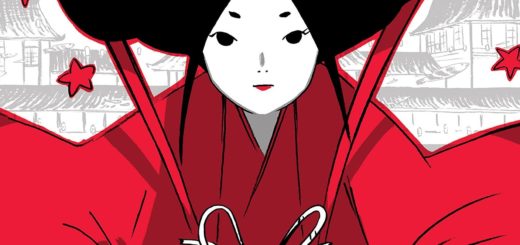
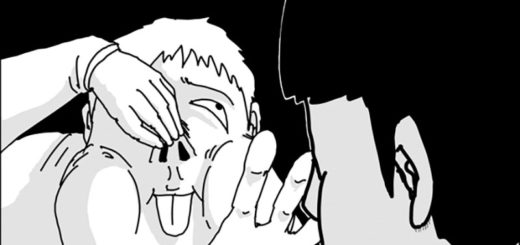
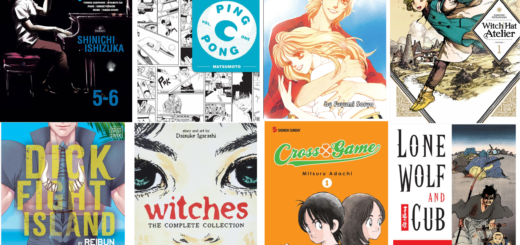
As someone who just powered through MHA after being reluctant to start it for years due to a probably unwarranted tendency to write off popular shonen titles, I kept wondering if you guys had considered covering it and if not, why not. Anyway, it’s fun and there’s some spectacular art in it’s pages. and I look forward to hearing your takes on it!
Re: SFX – I prefer the SFX to be fully translated (i.e. lettered in English, with the art redrawn) in the manga that I read. I can read hiragana/katakana but why assume that all of your target audience does? For those that can’t read Japanese, untranslated SFX are meaningless symbols taking up space on the panel. Like, if the goal of localization is to give the target readers the same experience that Japanese readers had, shouldn’t that apply to sound effects too?
But yeah, I always wonder what factors are at play when the SFX aren’t fully redone in English. Is it just a localization choice? Is it that the author didn’t give permission to retouch the art? Is it that it’s too time-consuming (and expensive) to retouch art and letter as closely as possible to the original? I’d love for some industry folks to chime in but I’ll probably keep wondering…
It’s mainly too time-consuming I would think. If you aren’t given the original files separated into the layers of art and lettering, you’re basically going to have to redraw the art that the original SFX was over and obscuring. Either that or have these weird white background SFX which I have seen before.
As a jazz violionist, who is a bit obsessed with trying to get more people to pay attention to the josei jazz series, The Kids on the Slope (Chris, you must know the series?)
BUT! I think
I love Kids on the Slope. I really wish that a publisher would pick up the manga. It is such a great series and it sparked my interested in Jazz! I wanted to love Blue Gaint,, but I just can’t with Dai. That type of character really really, really, gets on my nerves. But… the more I look at panels above from vol. 5-6 the more I want to give the series another chance.
I feel the same way about Dai… But I admit, this podcast and all the notes, do make me wonder if I should give the series another chance.
I was a bit curious in this podcast with Chris’ comment that he likes older jazz like Ella, and modern jazz–but to be pedantic, isn’t most of this jazz basically Ella-circa 60s style jazz? I mean Stan Getz? C’mon.
Re: The Dead Ass slang. I didn’t read that as a translation of a local slang but rather Dai trying to emulate the look and language of Jazz like he does when he cuts his hair like Sonny Rollins. I thought that panel being awkward and maybe a little try hard felt genuine to the experience of an outsider falling in love with an art form. Maybe that is explored more explicitly in the future volumes as Dai travels through Europe, but as a white guy who grew up in the midwest and fell in love with jazz without the maturity to understand the musics context, I recognized trying to talk jazz to understand jazz if that makes any kind of sense.
Just to add to my previous, eloquent post from a few days ago (which may or may not have been made on my phone, at the Victoria BC airport, after several drinks, while waiting for a new flight after a cancellation—your call)… I liked the first two volumes of Blue Giant, but there were enough issues I had with it that I was in no rush to read more. This podcast *has* made me re-think that.
I did grow up playing violin, from age 3, and very seriously from ages 8-19 (shout out to the Suzuki method—which later in my playing every teacher seemed to think was the worst possible way to learn an instrument). In my last few years, I was asked to play violin in a number of jazz venues, too. So a lot of this held some resonance with me—and I appreciated that, as Deb and others mention, it doesn’t take a purely sports-manga approach to learning how to play an instrument. But a lot of it, still, made me say to myself “Give me a break…”
I would read anything by Marimo Ragawa, ever since reading her groundbreaking (yes, groundbreaking) gay soap New York, New York, one of the first BL mangas (in Hana to Yume, no less) to even try to deal with the realities of being gay, back in the 90s (I had to buy the French editions from the “adult” section of a Montreal bookstore—but now it’s finally out in English from Yen! If I hadn’t mentioned that before! 😛 ) so was eager for the translation of Those Snow White Notes. The anime and manga both start off like it’s going to be a completely different series than it quickly becomes, and, as Deb mentions, the anime streamlining this actually works better, as does hearing the amazing music in the anime.
But I have to warn people against the Kodansha digital online manga. I rarely buy digital only manga—so I have no idea if this is indicative of Kodansha dig-only titles or not, but it severely needs an editor. A lot of the translation is honestly incoherent, and it is an embarrassingly sloppy release that reads far worse than a lot of fan scans. I have bought all of the volumes just because I want to support Ragawa titles being released (I’ve been buying her The Vampire & His Pleasant Companions, which she doesn’t write but does the art for, and I’m not sure I even like much—but does have a physical release). But the release really needs to be called out (and it has been, on Twitter at least) for how crappy it’s been localized.
And yeah, I constantly mention Yuki Kodama’s awesome Petit Flower josei manga, The Kids on the Slope, but that’s the music/jazz manga that I have really connected with, and DID make me think of my own experience as a classical musician learning how to play along with jazz musicians. I’m glad to see Kelli, in the responses, also is such a fan.
Admittedly, I discovered it first through the anime, and then went back to the manga, but even so, I think the manga does a really good job of conveying the differences in how instruments can be played, in a way that I didn’t get from Blue Giant (in the first two volumes, anyway.) But it is maddening to me that Kids on the Slope rarely even got a mention in all the recent talk about the Cowboy Bebop live action—since the anime was the only manga adaptation by Bebop and Samurai Champloo creator Shinichirō Watanabe, and it almost feels like a lot of his fanbase ignores it *because* it’s josei. It makes me think of how so much of the hardcore Hideako Anno fanbase that loves Evangelion, and endlessly examines how it fits into the other varied works Anno has done, but almost always ignores his great shoujo manga adaptation, KareKano/His and Her Circumstances. Like these projects are works that anime auteurs like Anno, or Watanabe, were somehow forced to do, when that’s not remotely the case. (And I feel the need to point out that Kids on the Slope’s anime is also the only time Watanabe seems to be seriously examining homosexual attraction—not to read TOO much into the homoerotic element—and not treating it as a joke like he did in his previous series—although the Kids on the Slope dub, which is mostly terrific, really overplays one secondary characters’, umm, flamboyance.)
Despite being josei, Kids on the Slope is a title that centres around a male protagonist, and mostly male friendships, in a pretty traditional shonen/seinen setting, and was from a major anime director, and is a relatively brief 10 tankoubons long, it’s crazy to me that the manga wasn’t ever even picked up—which is a real shame as, while the manga misses the tremendous jazz sequences of the anime, it really fleshes out the characters and stories (Watanabe even said that he fought to try to be allowed to do more episodes) with gorgeous art work. And, as David mentions, it does cover a lot of the same jazz greats as this does—despite being set in the late 60s (including the student revolutions) and so doesn’t touch more modern jazz. Though, to poorly address what David says, Kids on the Slope does address to an extent the fact that these Asian teen (including a discriminated half-Asian teen) are playing American jazz in a Japanese city filled with American sailors, they only *slightly* address the American race issue.
And yes, I did notice the Moanin’/Morning thing (a jazz great that was featured heavily in the first tankoubon of Slope as well as here in Blue Giant). The one time the issue of translating a Japanese title without really doing any research really personally bothered me was in the 2000s release of the shoujo ballet classic Swan. I have no idea what was going on at CMX manga to even pick up the titles they picked up, and I suspect they didn’t have a great editorial team, so I cut them a lot of slack for even having released a title, but as a ballet fanatic it would cause me to cringe whenever they’d mention ballet steps or even famous ballet dancers (like Margot Fonteyn) and we’d get a weird new step/dancer name that obviously was a literal translation of the Japanese kata, or whatever, that was used, with no one bothering to actually go back and check what word or name that Japanese kata was adapting (and a friend confirmed to me that the Japanese Swan editions got all of the names right, so it was a translation error.)
And I promise that will be my final sales pitch for Kids on the Slope on here. For a while.
Anyway, here I am rambling and whining as usual. Another terrific episode—and one that has me hoping I can catch up with Blue Giant with some of my birthday money.
(Oh, and an aside–Yoko Kanno did the score for Kids on the Slope, as Chris mentions (though obviously not the actual jazz numbers which have been collected on numerous Blue Note connected CDs) and did the Bebop score, and yet, I recently read in an interview, she claims she really doesn’t like jazz… hrmm….)
AND, cuz I haven’t just been obsessed with shoujo and josei manga for 30 years now, but also have been a raving musical theatre/Stephen Sondheim theatre queen for at least as long, my go to jazz tends to be musical theatre based. There was an all-star jazz album, Color and Light, devoted to Sondheim from the mid 90s that was a happy present to me after my grade 9 grad that I still play a lot. It runs the gamut from really standard jazz interpretations to more avant-garde ones, but I’ve always loved Nancy Wilson (though I can take or leave Peobe) and Loving You, from the Sondheim/Lapine musical Passion, is one of his fave songs, so her version is a jazz fave of mine https://www.youtube.com/watch?v=7vU-k0tRNm4
But I also grew up with the Stan Getz/Joao Gilberto album with Girl from Ipanema on it, so anything from there is a fave too. And my step brother who is a jazz musician in Toronto would be horribly annoyed with me making two such commercial and not remotely experimental, choices.
Jumping in cold at Vol 5 also worked for me.
As for jazz, I imagined Dai plays like Shabaka Hutchings, of Sons of Kemet and multiple other bands:
https://www.youtube.com/watch?v=Vor3gieFTc4
Primarily wanted to comment to thank David for editing in clips of the songs as y’all were talking about it. It was such a pleasant surprise! And it really helped, because I also know very, very little about jazz (I knew Tank!).
But also I’m so excited that you’re covering Witch Hat Atelier and My Hero Academia! They’re both dear to me, but I really enjoy hearing more perspectives and thoughts, and I’m curious what about My Hero will irritate Chip.
I thoroughly enjoyed this episode, despite not really being into jazz. I have been to a number of Japanese jazz clubs over the years owing to being friends with a trumpet player in jaza band. Christopher’s description of the jazz clubs in the manga resonated with me. And I second Rowan in wanting to thank David for overlaying clips of the songs you were all thinking of. That was a super nice touch.
I can’t believe we learned more secrets about Chip’s past! Just another couple years’ worth of episode and I’ll be able to publish my unauthorized biography on him!
SFX-to translate or not to translate? You know, since I can read Japanese, it’s probably not fair for me voice an opinion on what translated manga should do, but, it’s the internet, so I guess I’ll go for it. 🙂 Honestly, I’ve never really enjoyed SFX in English-language comics, because they’re always so lacking. English, compared to Japanese, doesn’t have the breadth of onomatopoeia that Japanese does. In fact, in Japanese, may onomatopoeia are actual words, although there are some exceptions in English. (“Boom” comes to mind.) Then there are the times when writers try to make something of the SFX by misspelling them for some kind of effect (crash as krash or krshhh), which never really lands for me. I do like when artists incorporate the SFX into their drawings, like Frank Quitely has done a number of times. And I do love in “Groo” the SFX for Groo slaying people is “SLAY!” Of course, that just underlines how I find SFX more comedic in American comics. But the flip side is, when reading manga in Japanese, I tend to gloss over them, choosing instead to get the vibe from the style they’re drawn in. I think their presentation is WAY more important than what they actually mean, which is another reason I’m for keeping them in Japanese.
Music in comics is hard! I remember how Dave Sim purposefully didn’t include any musical notes (or even draw a band!) for the scenes in “Jaka’s Story” when Jaka is dancing. It wasn’t till he mentioned it the letters column that I actually noticed and realized I hadn’t been missing it. For “Blue Giant,” I think the way some of those scenes are drawn really conveys the intensity of the performance , and you don’t really need music bars wafting across the page at you.
Finally, thank you for the audio of the butt sheet music from “Garden of Earthly Delights”! I’ve been wondering my entire life what that song sounded like, and now I know!